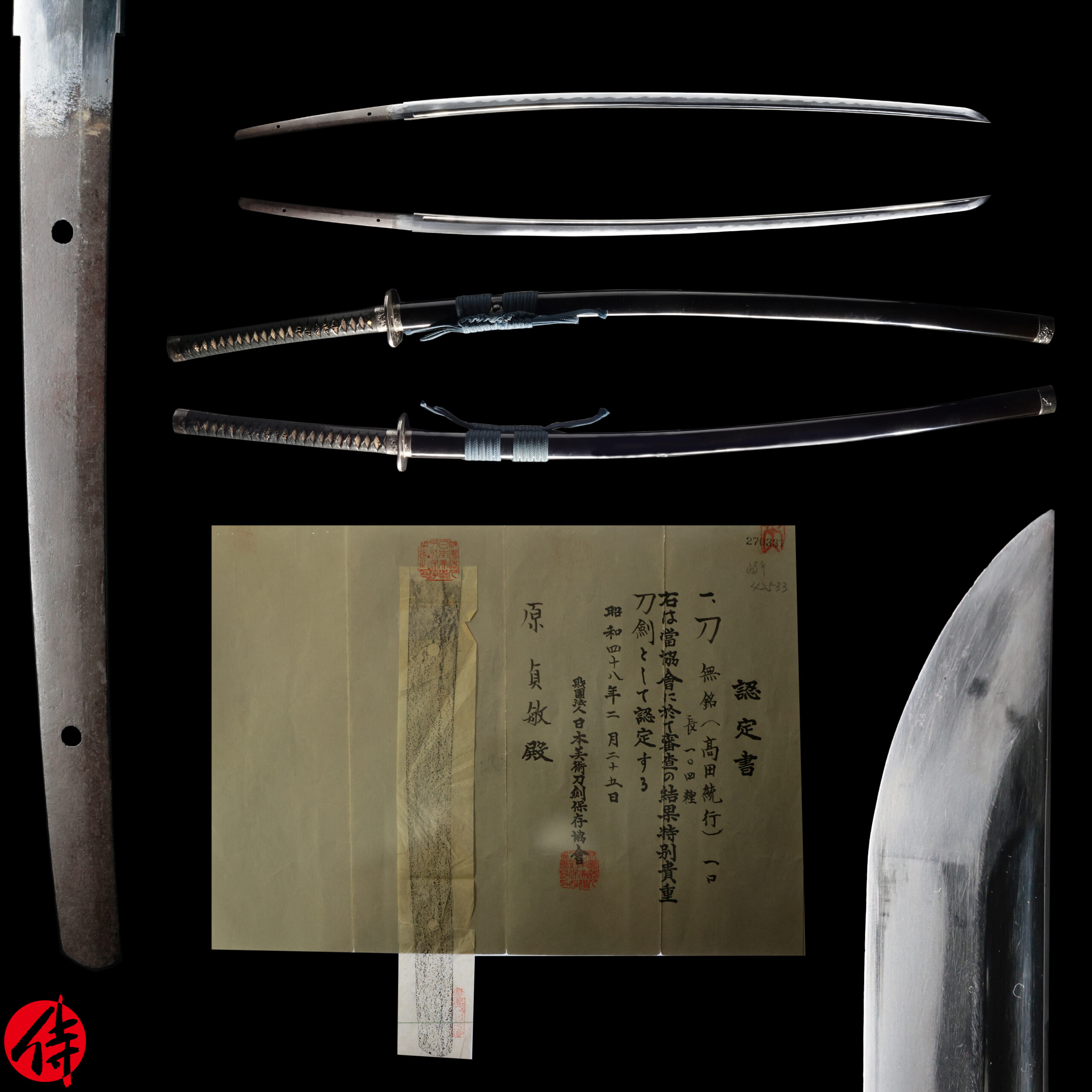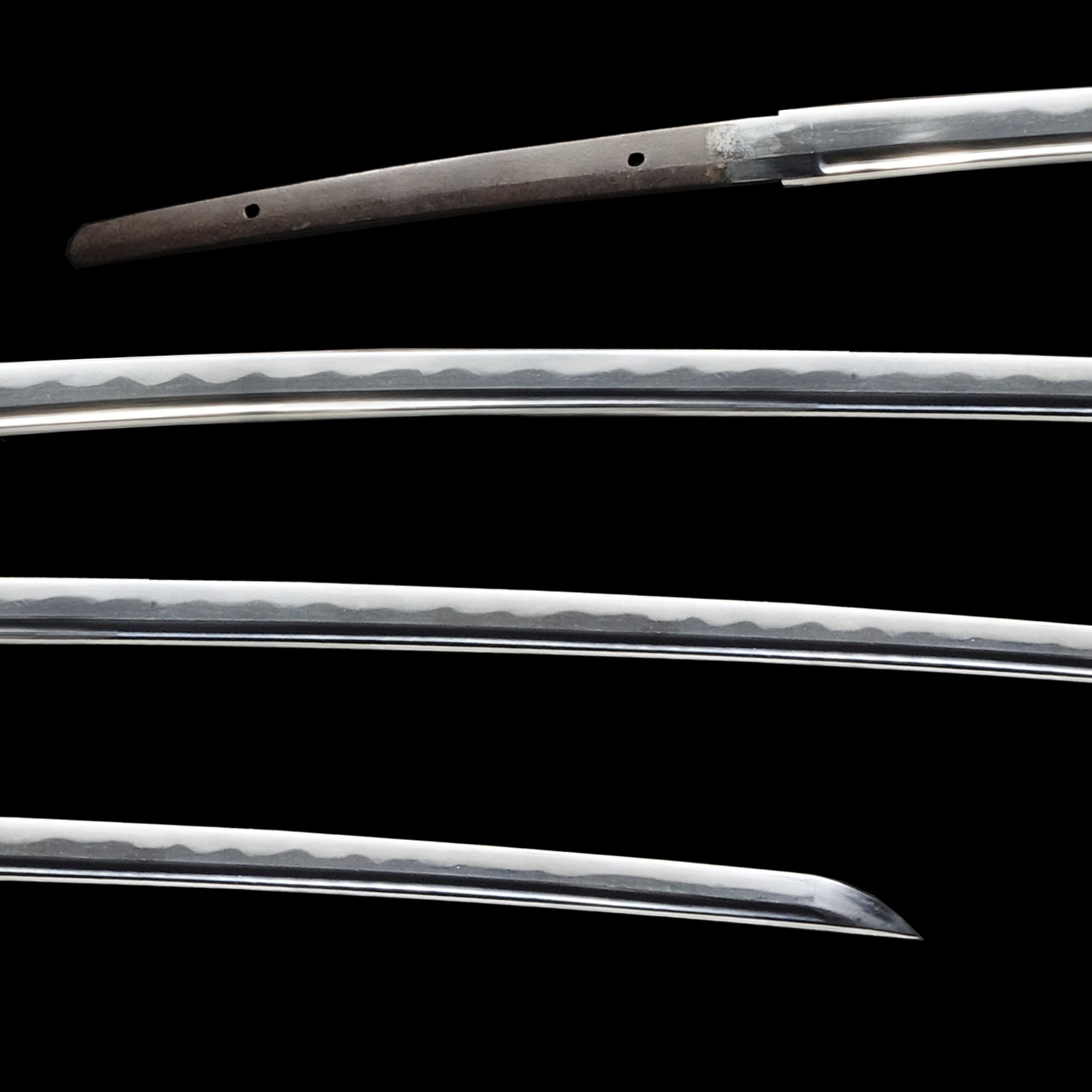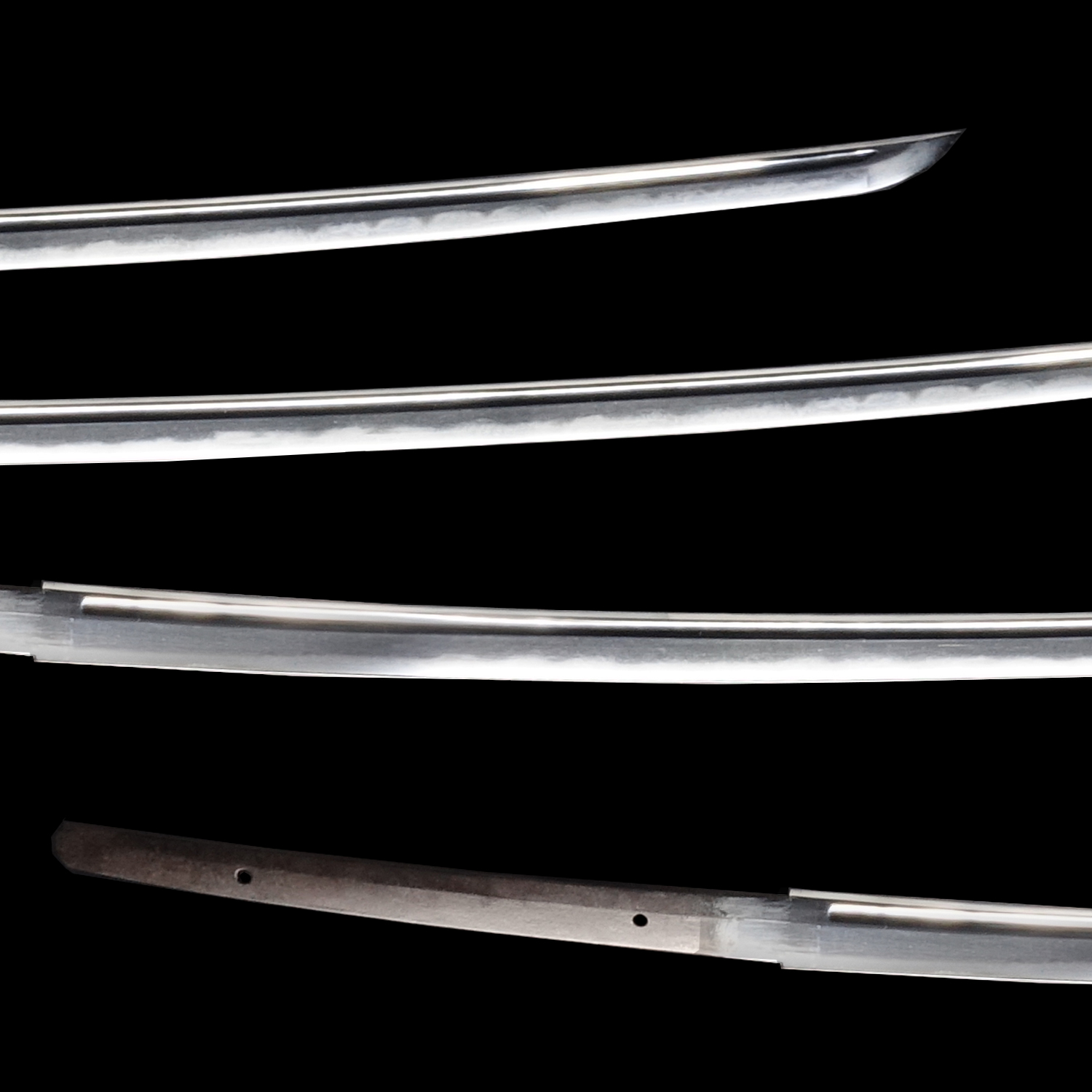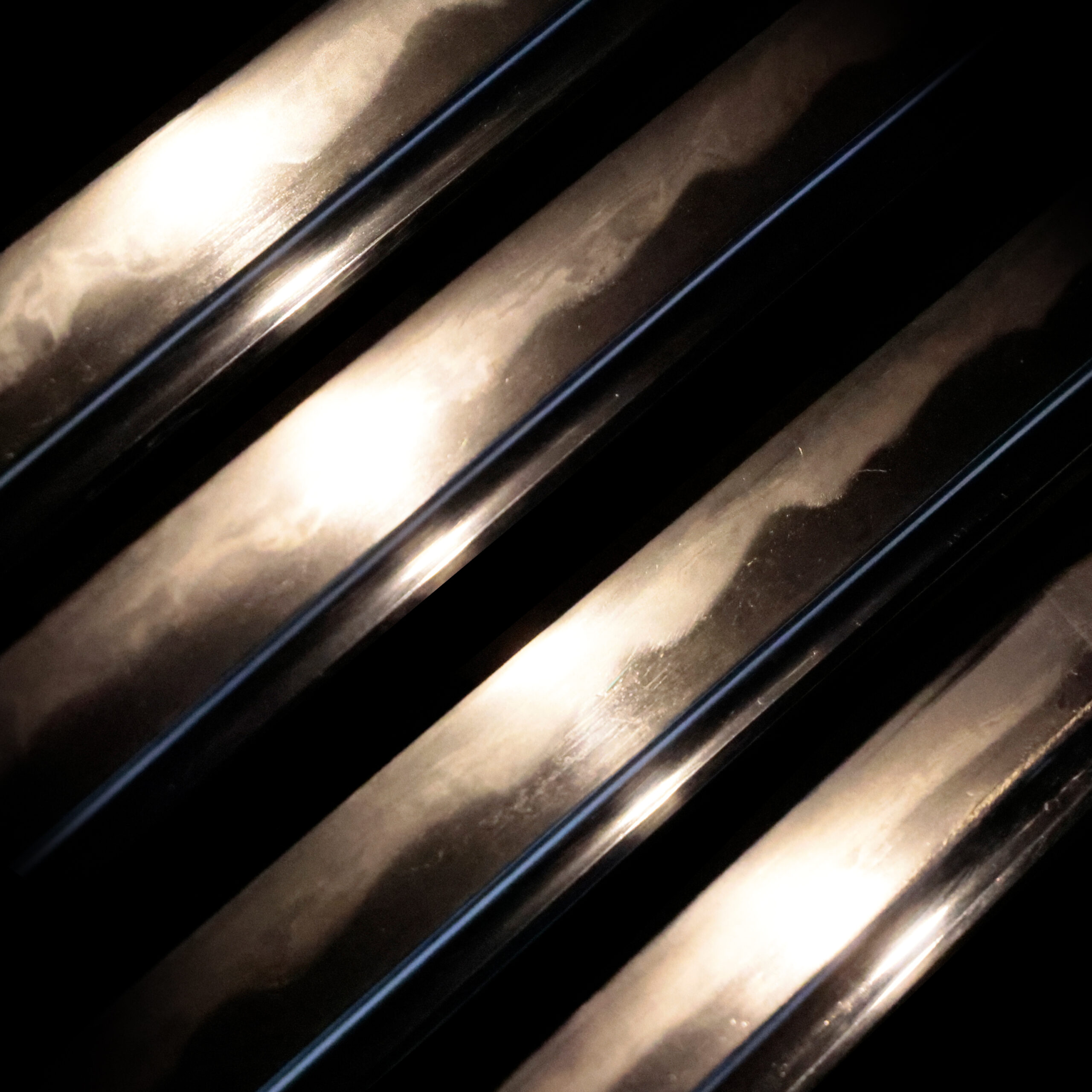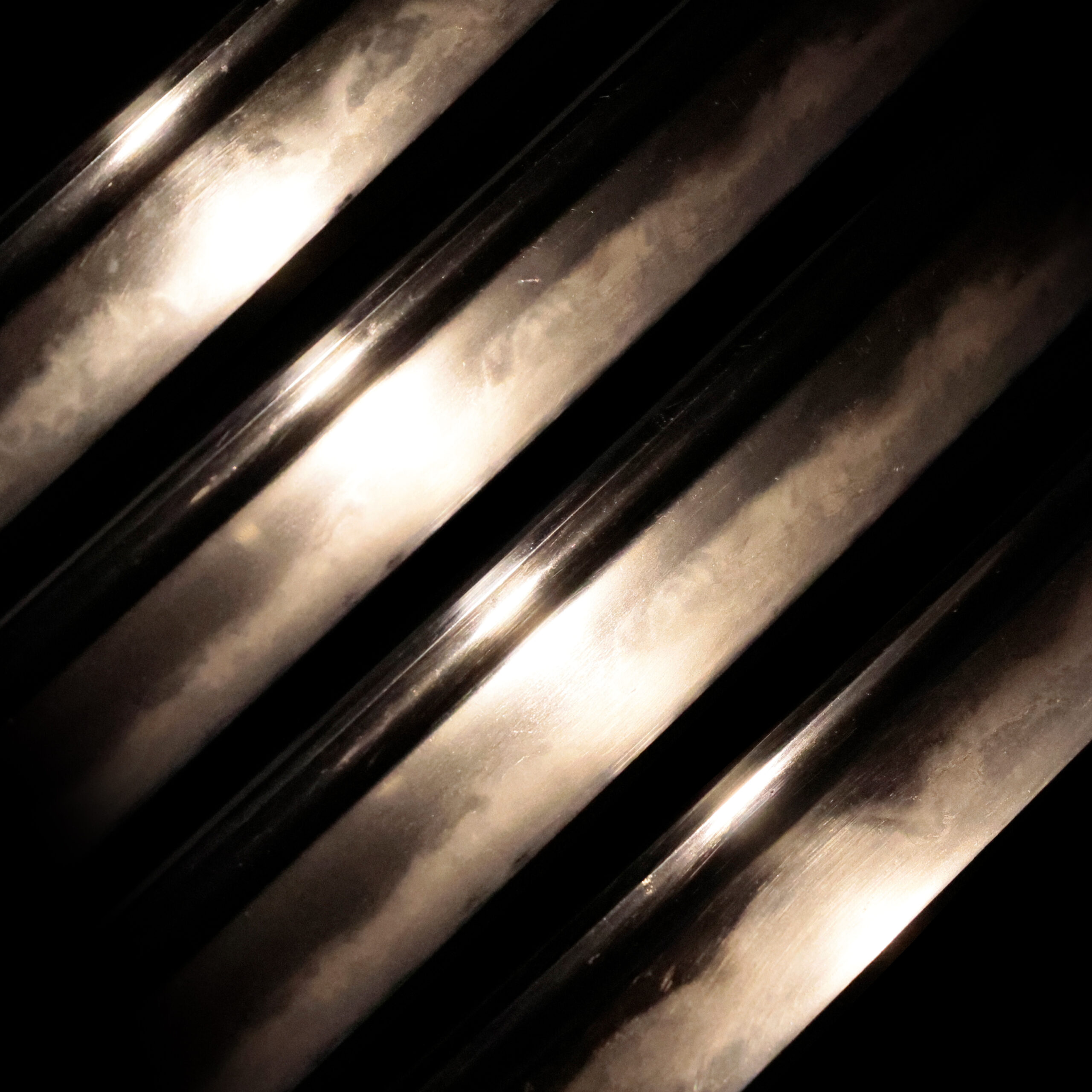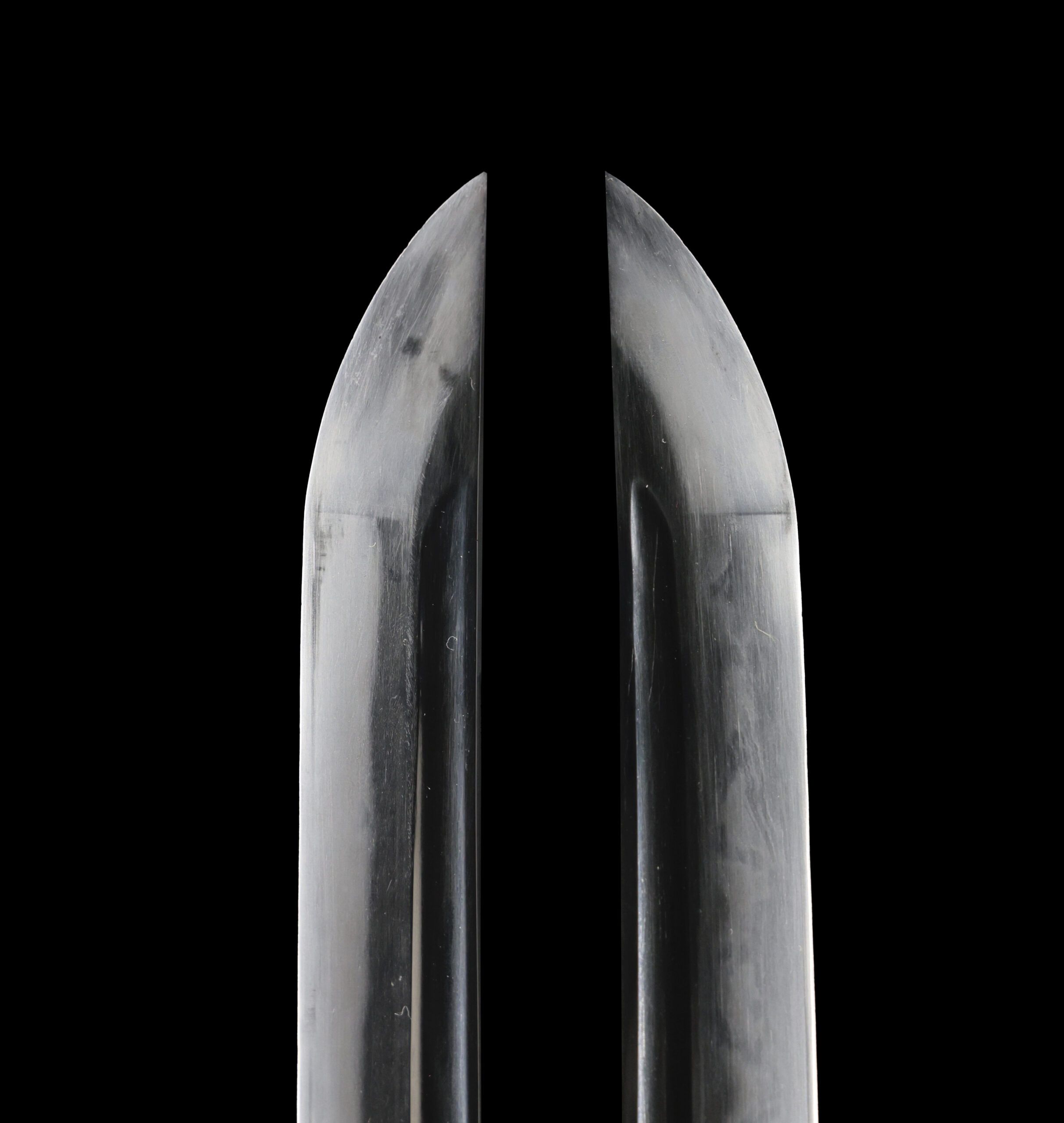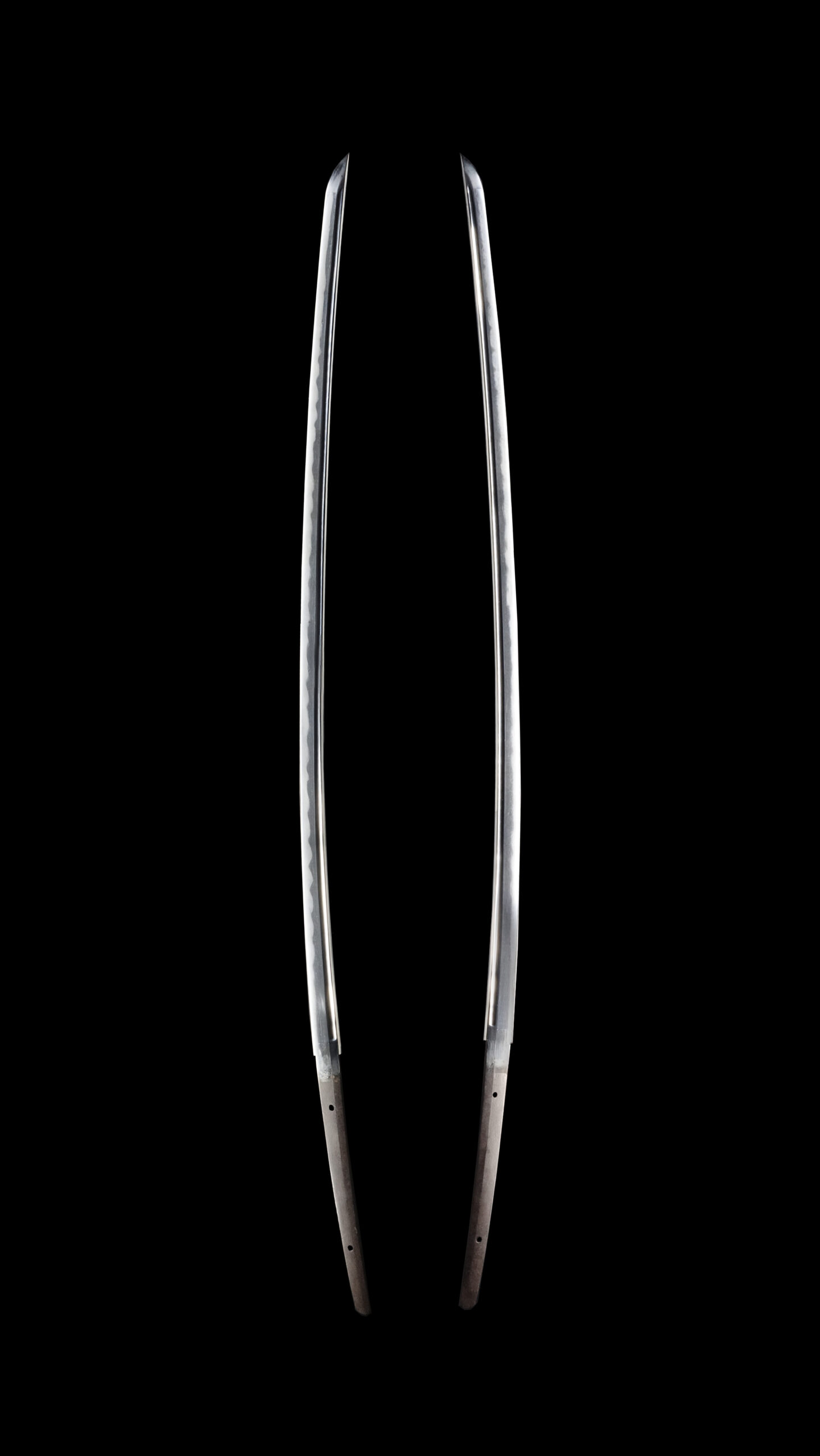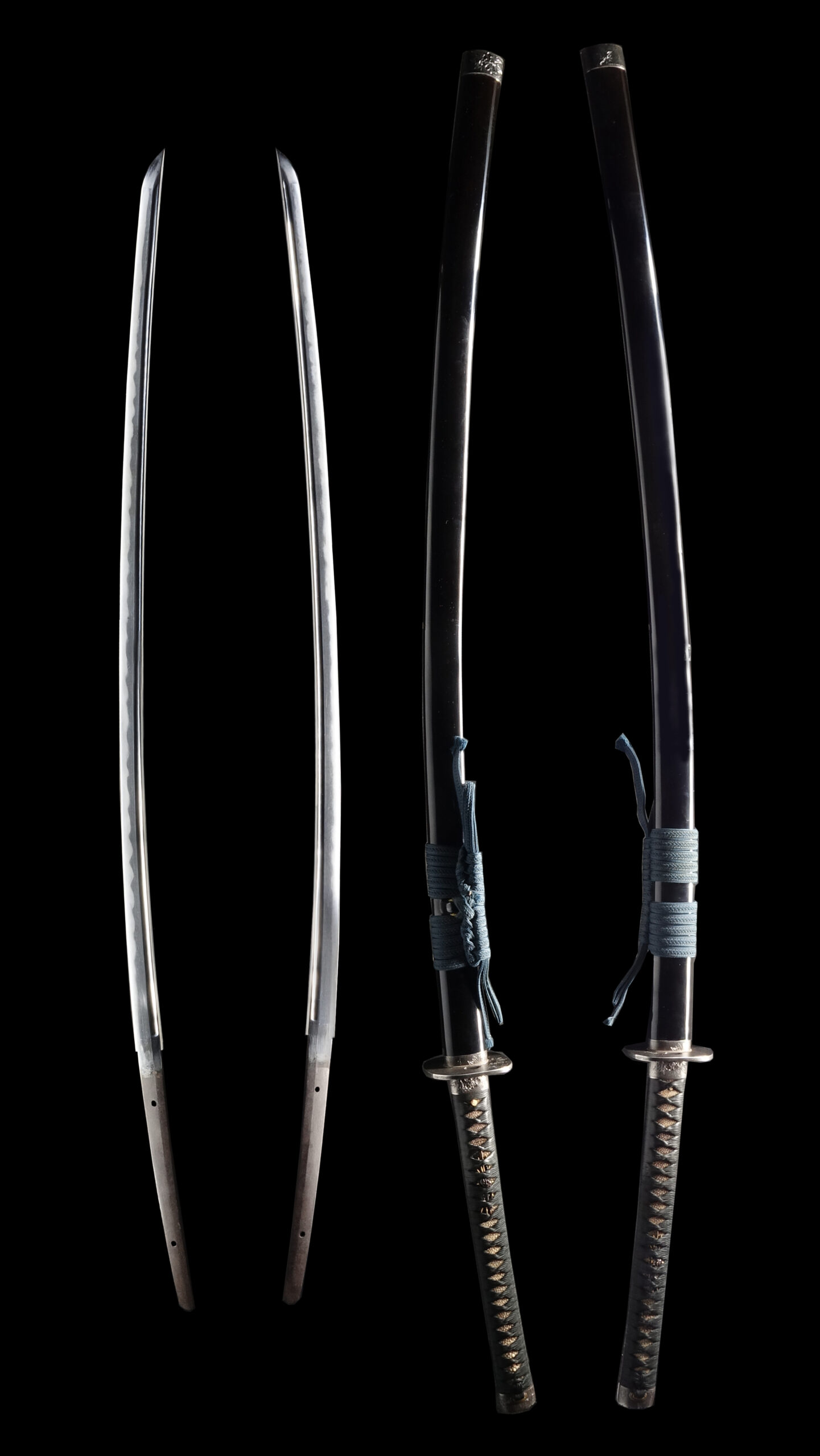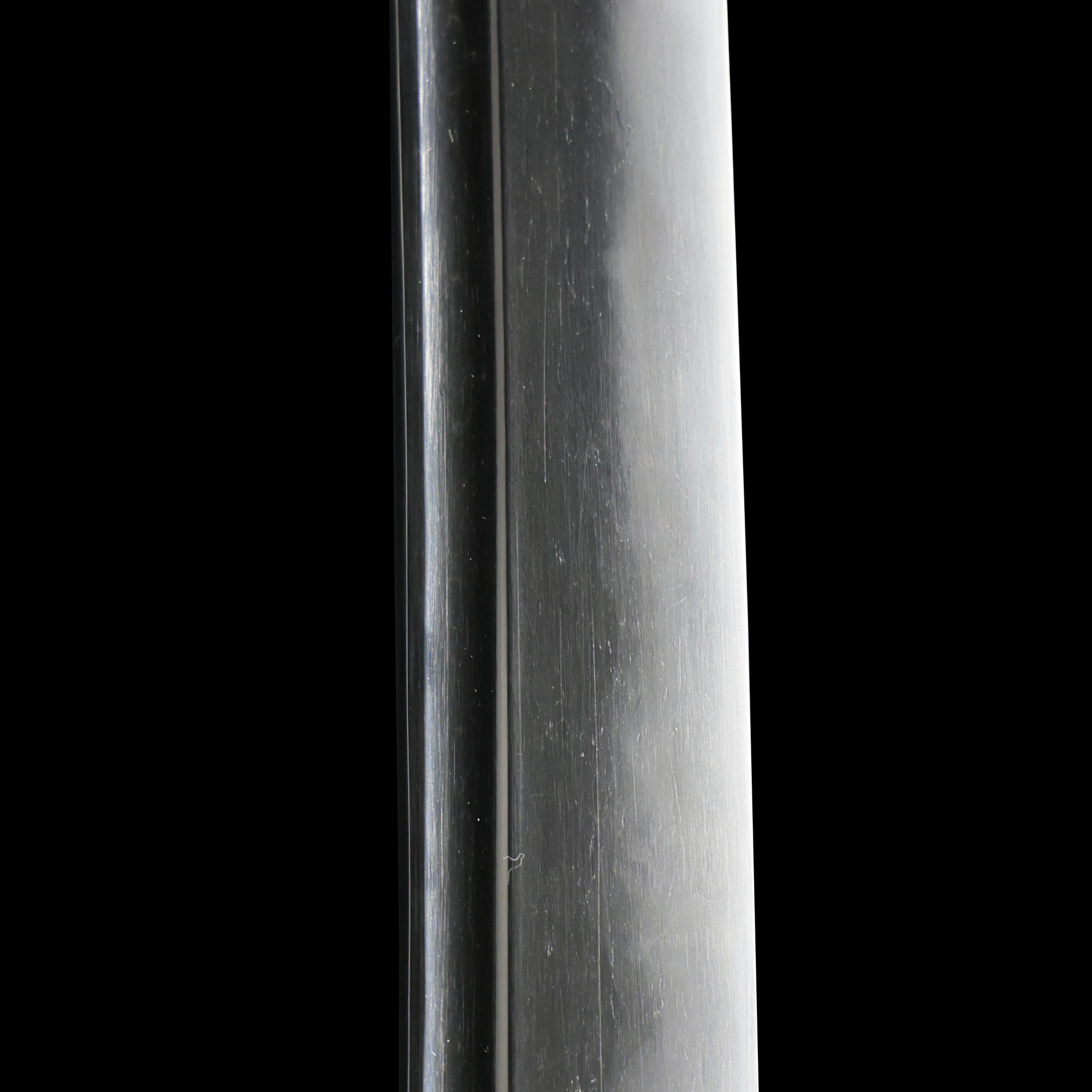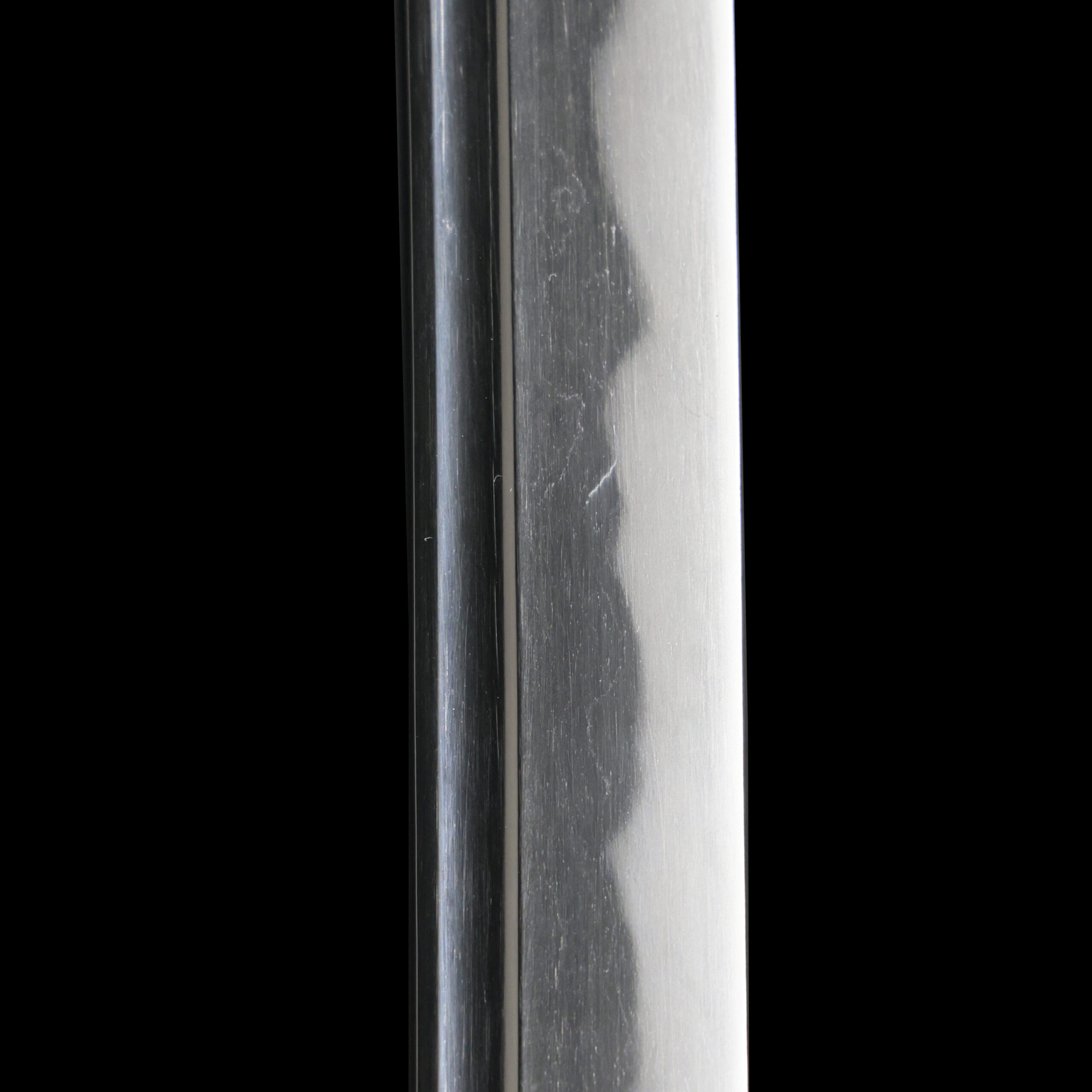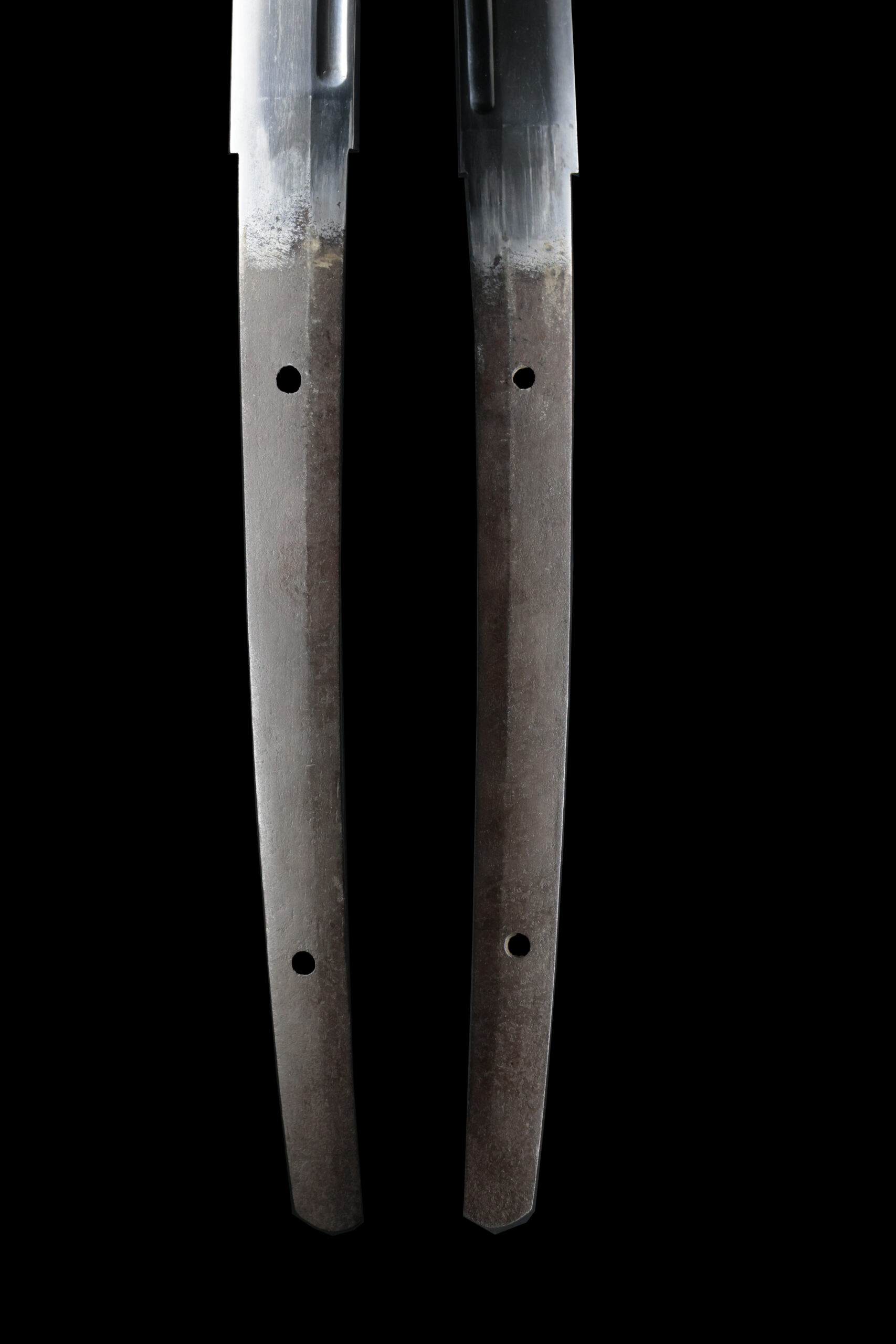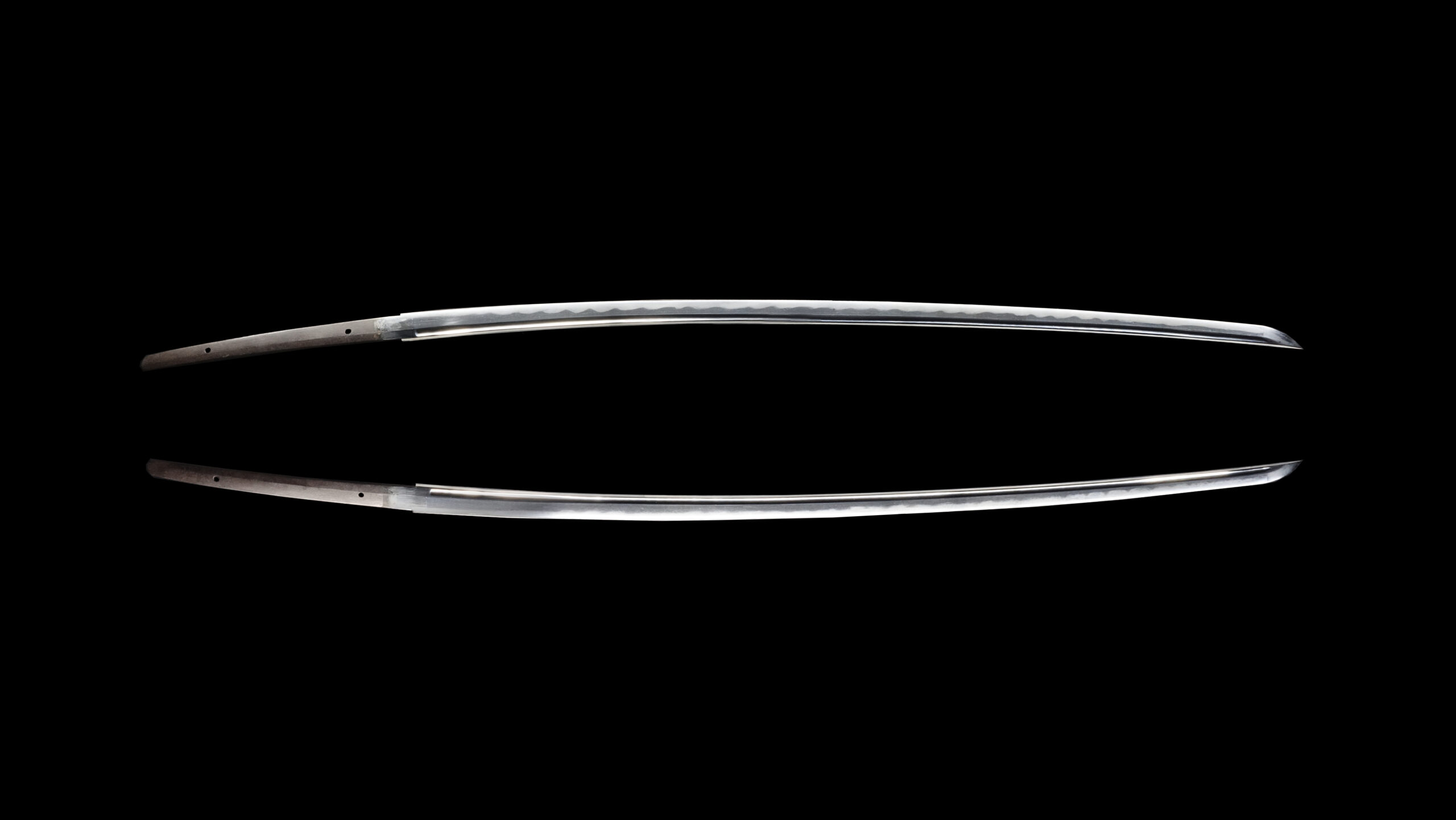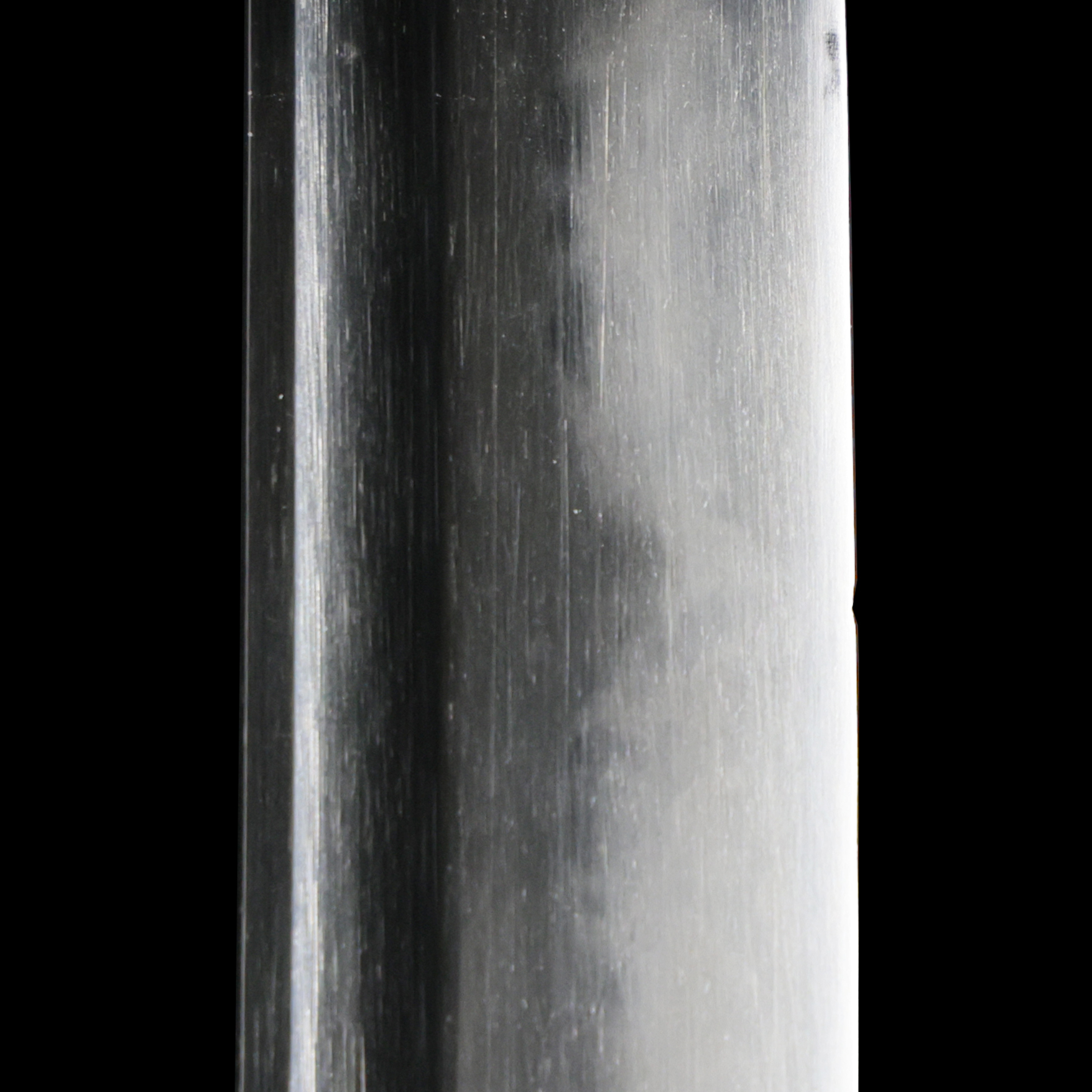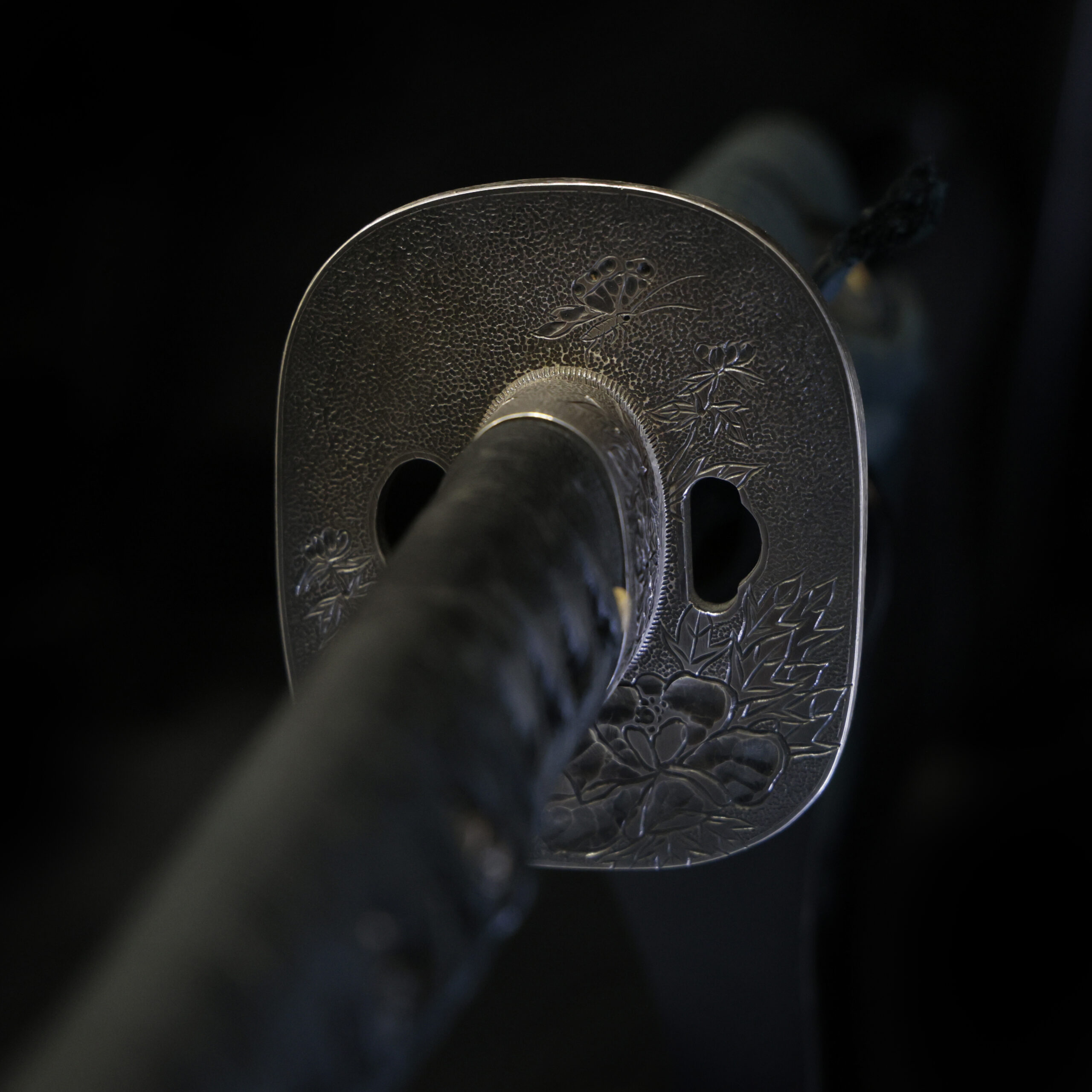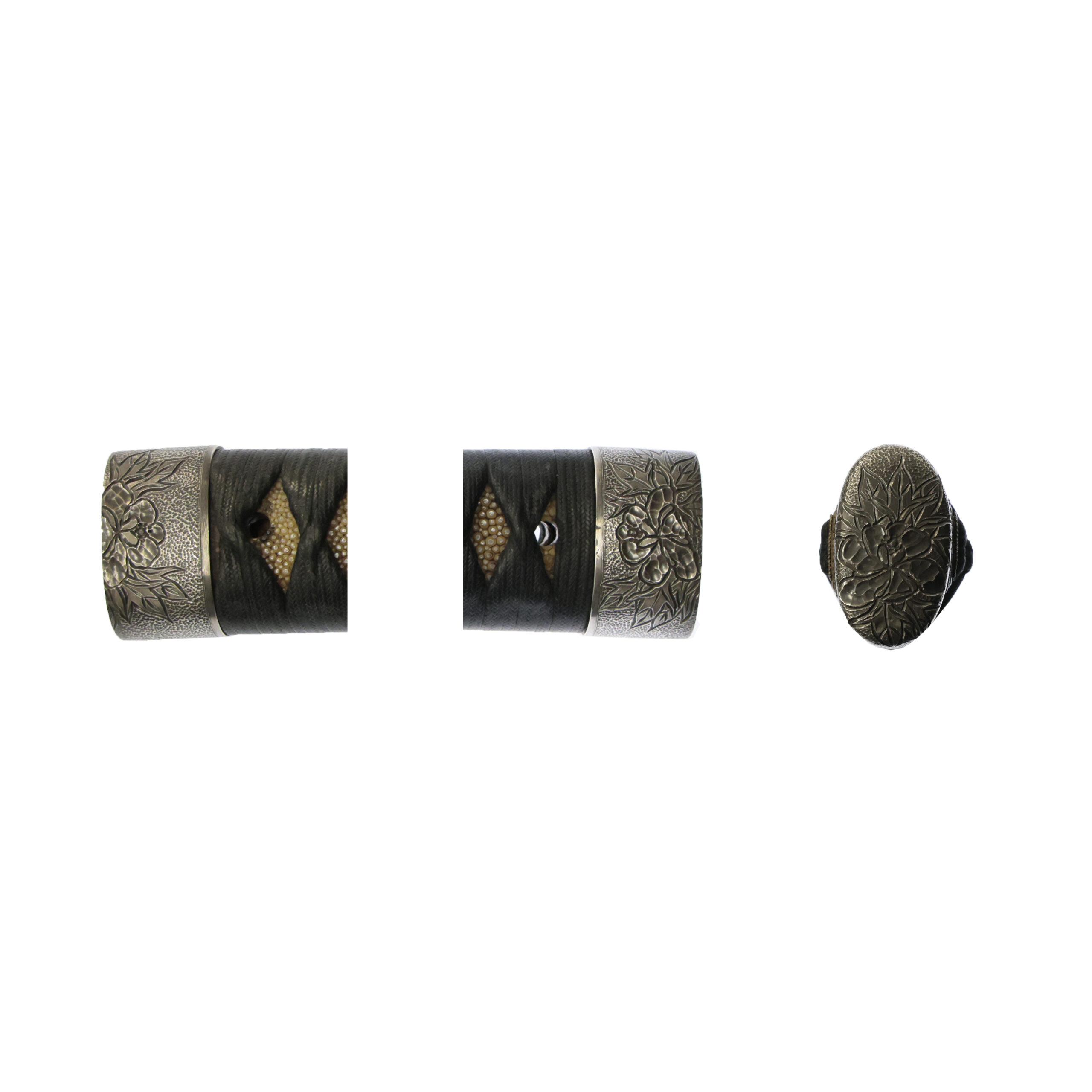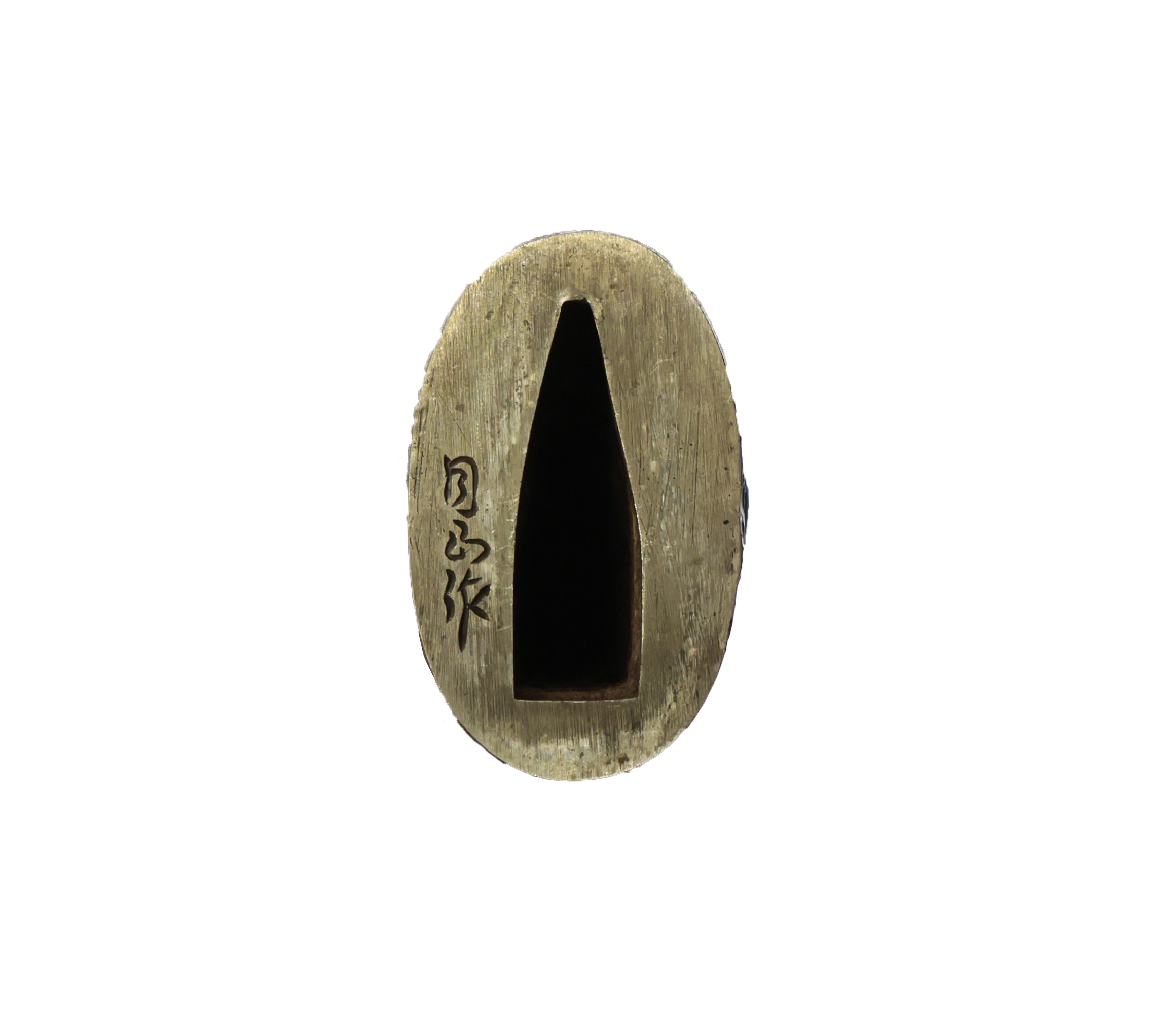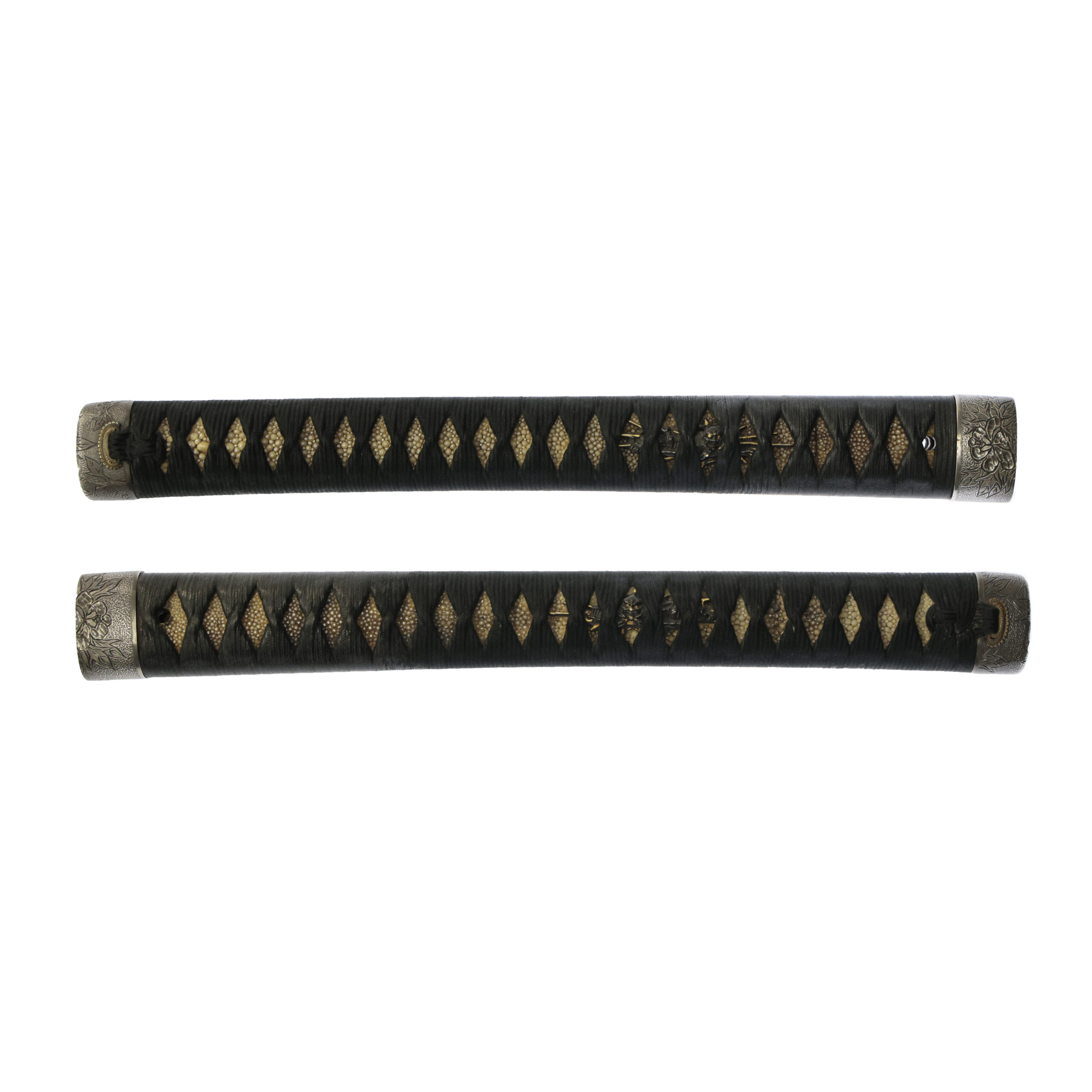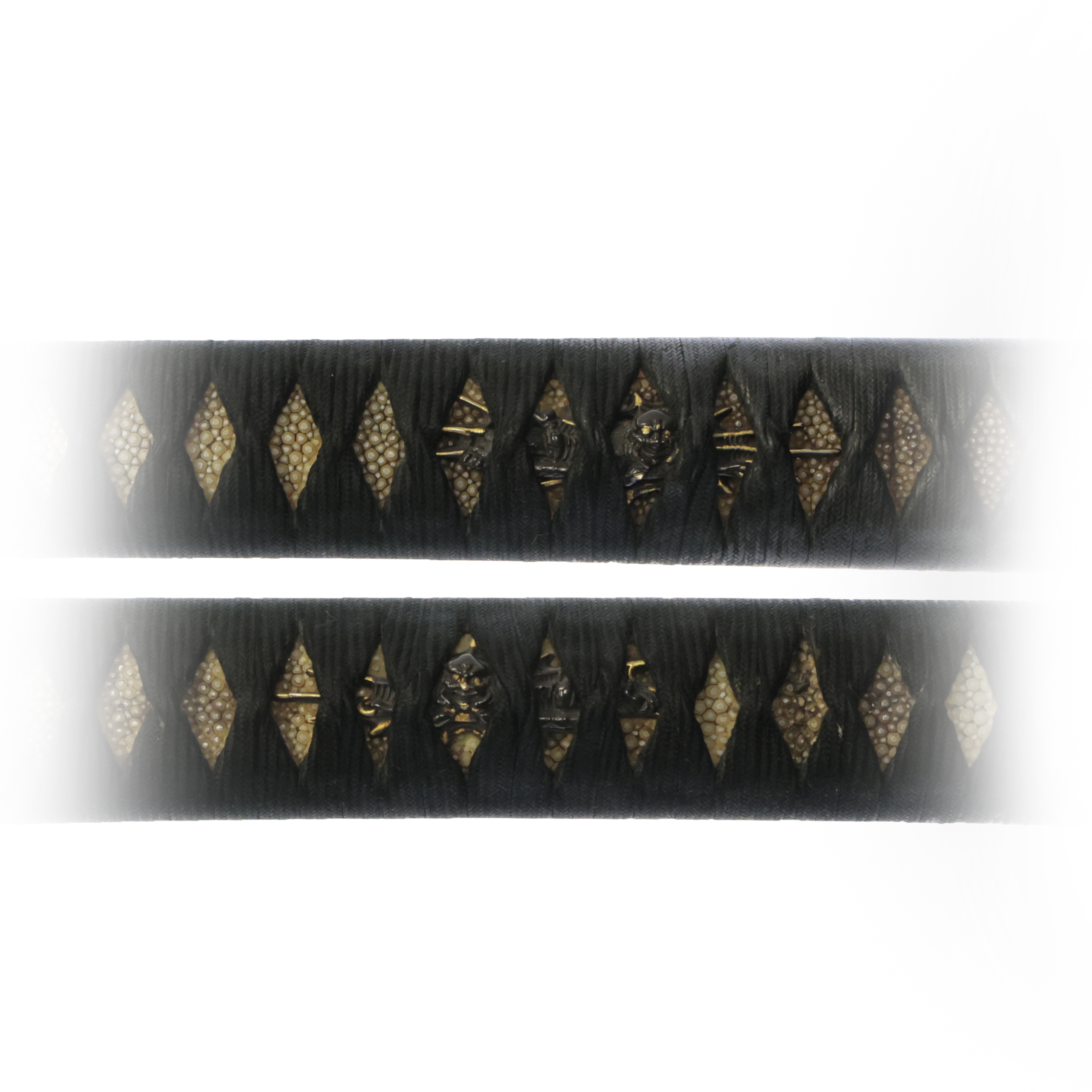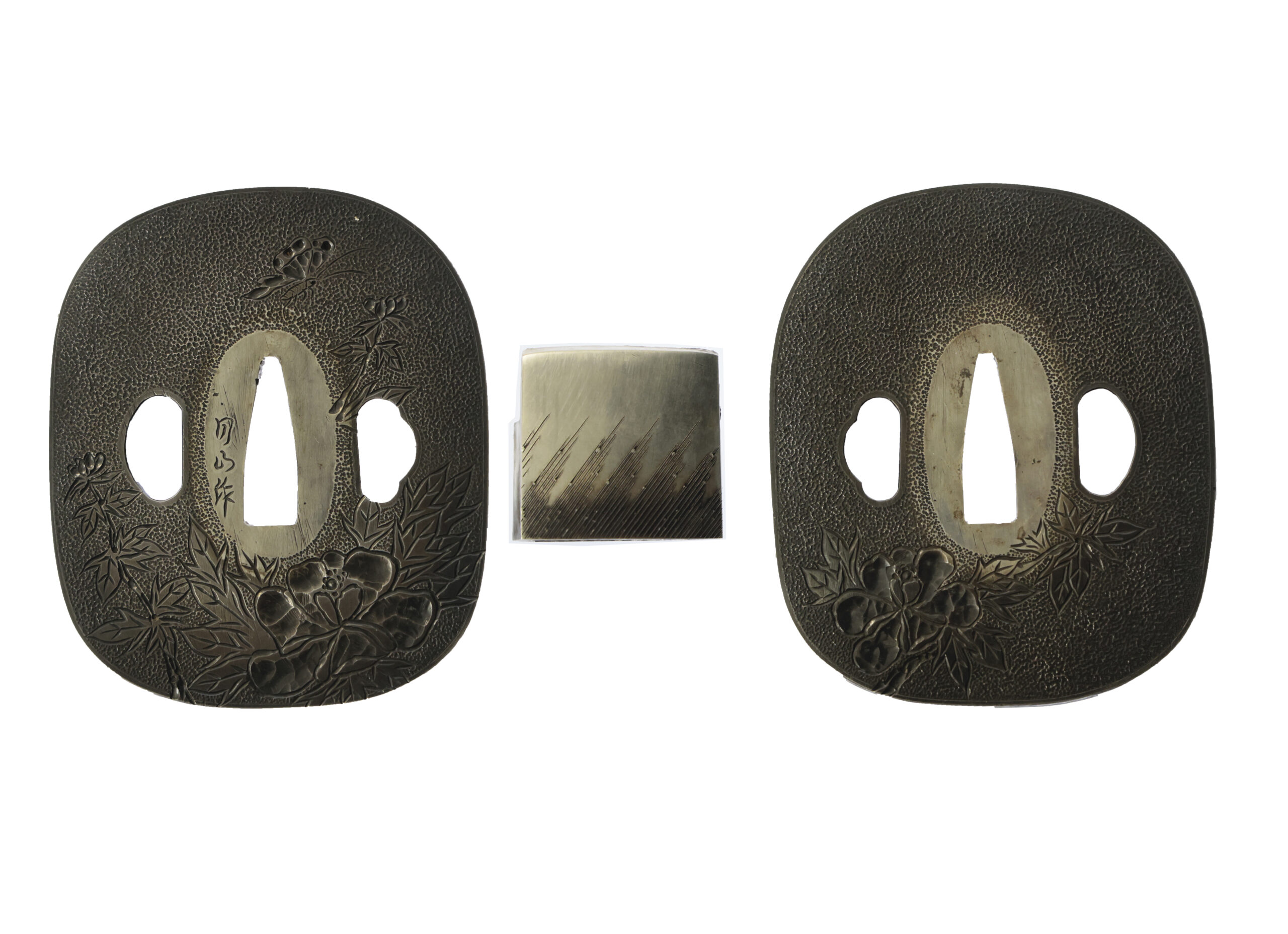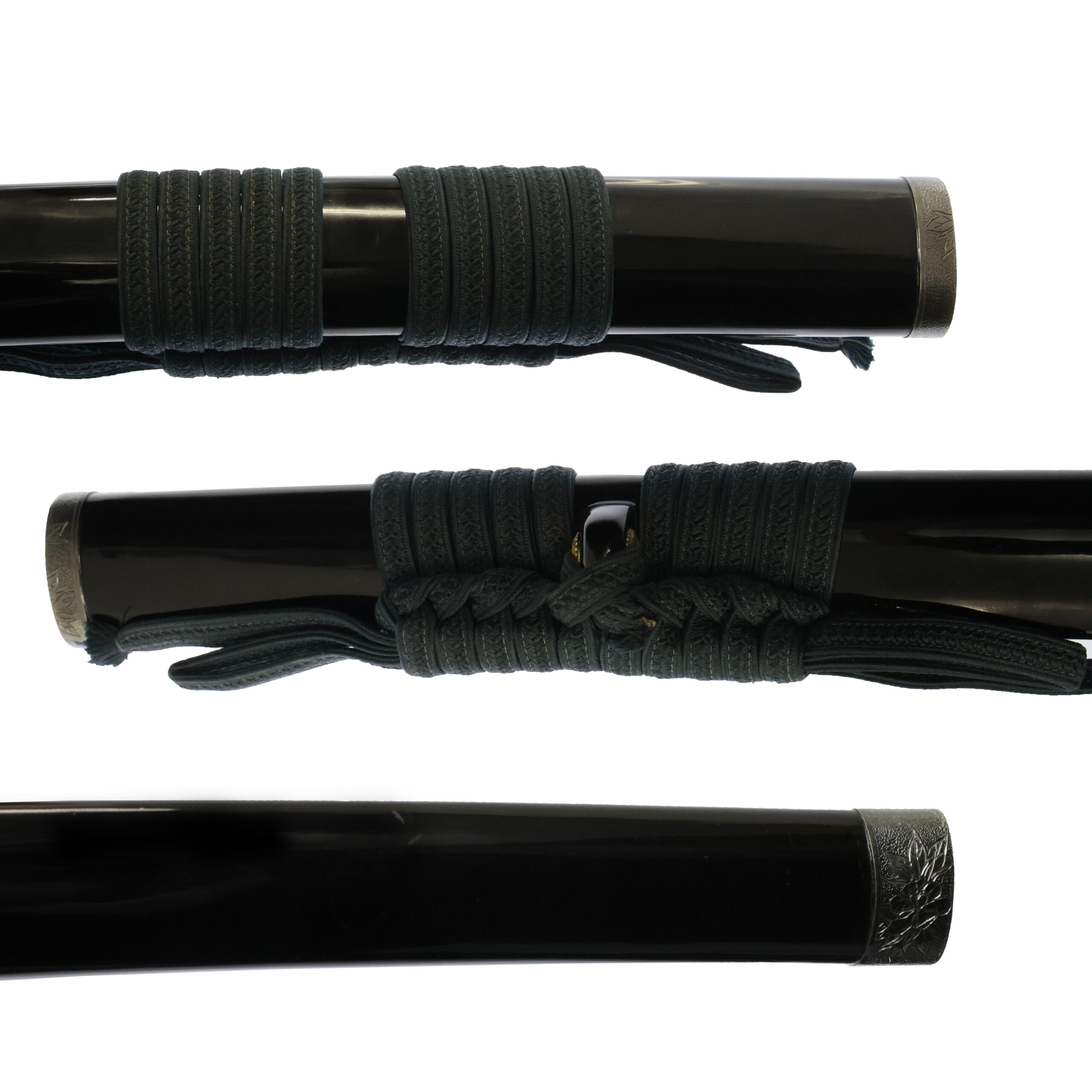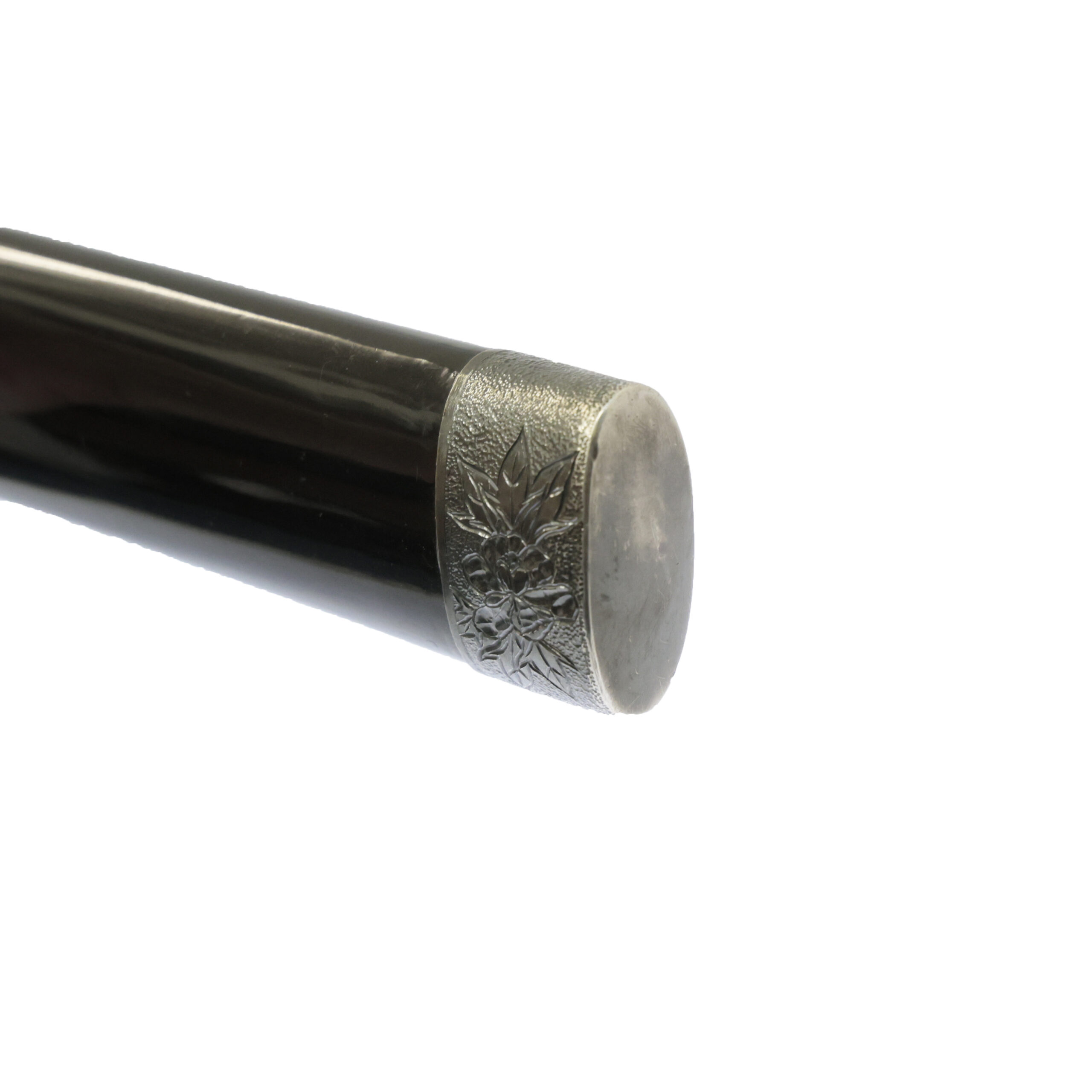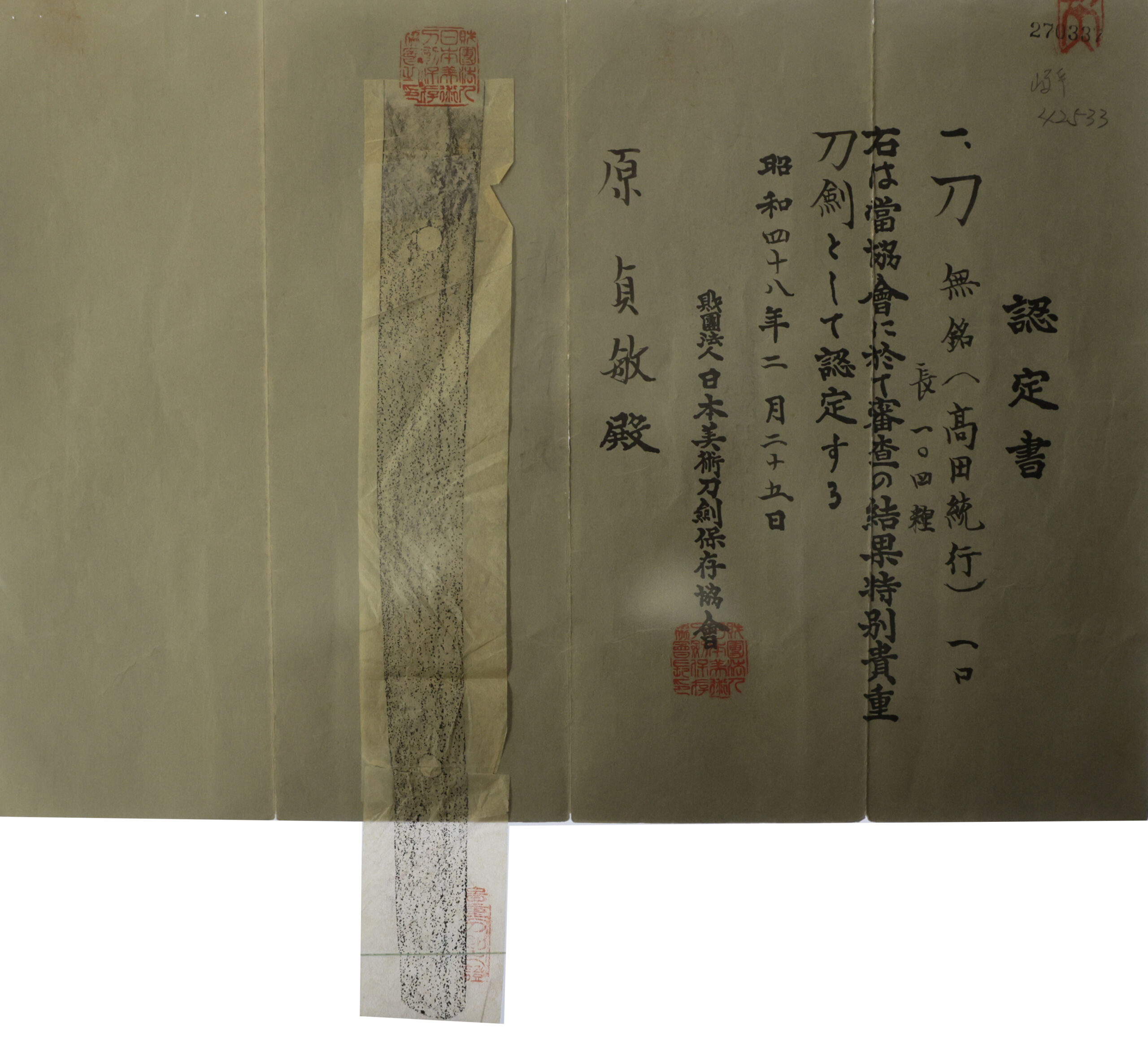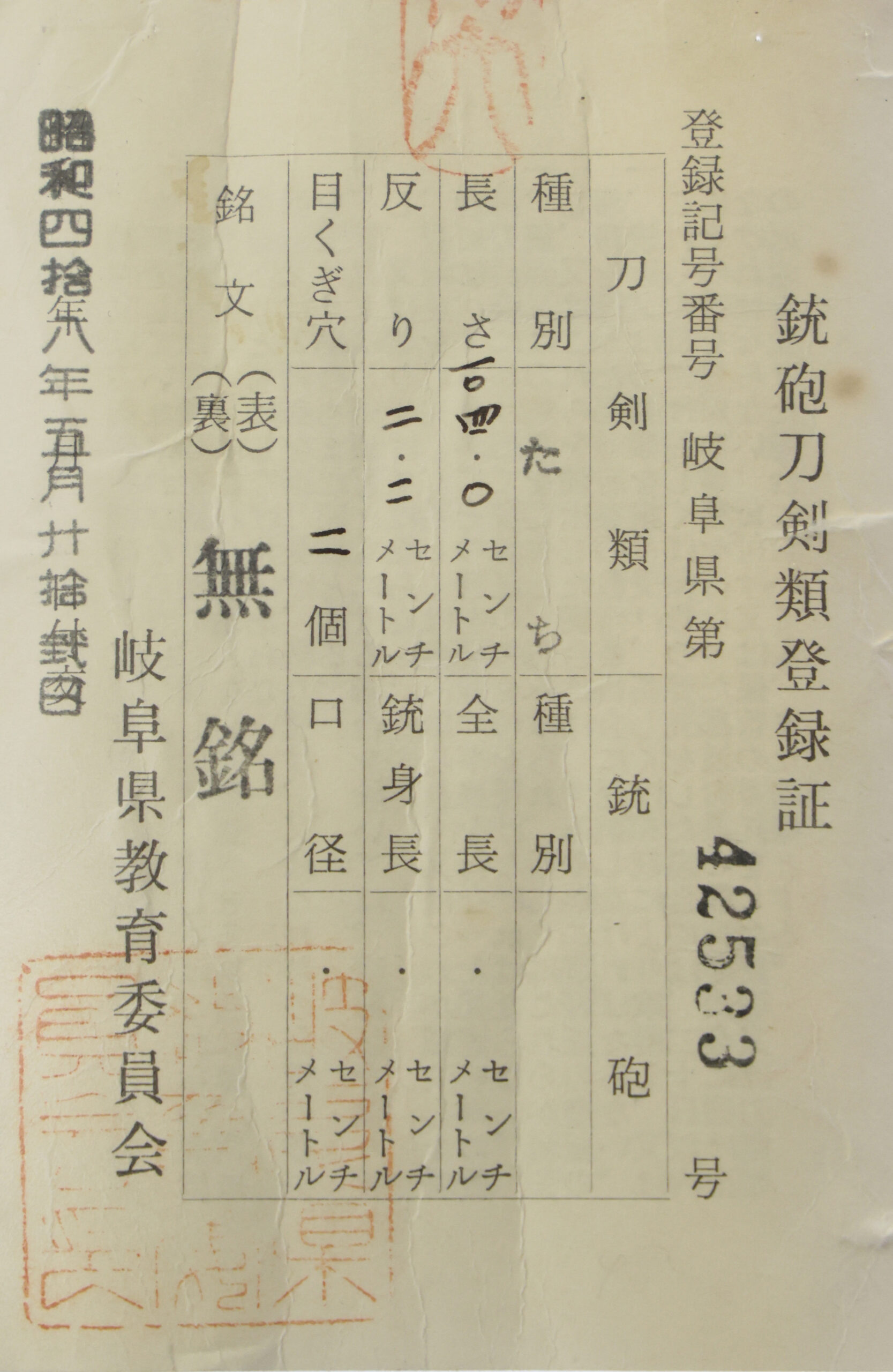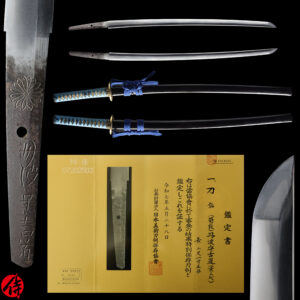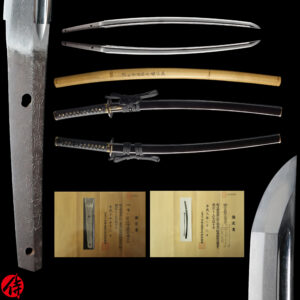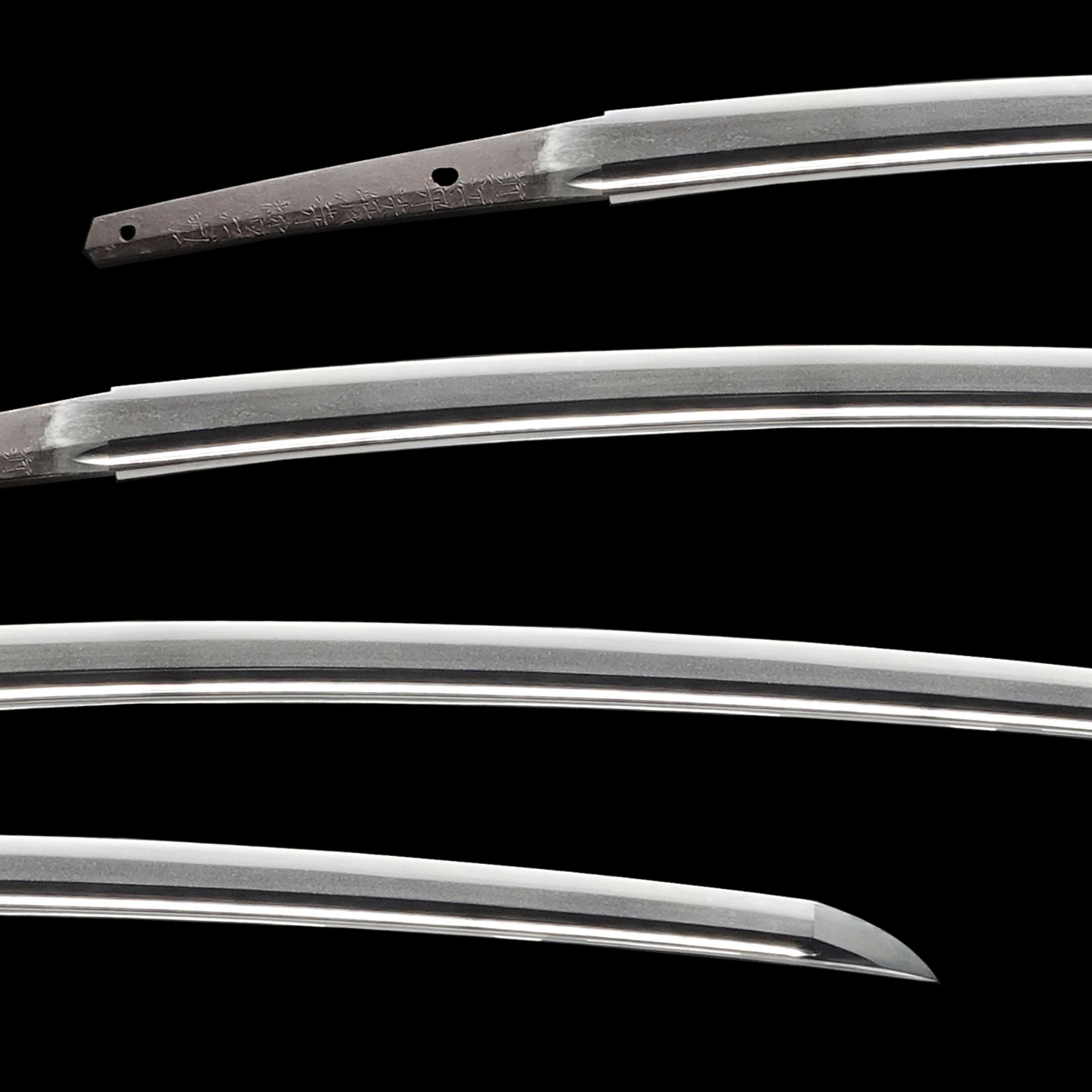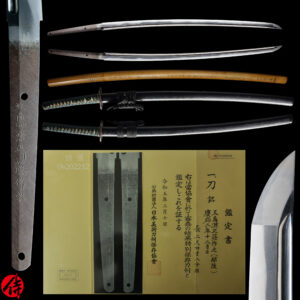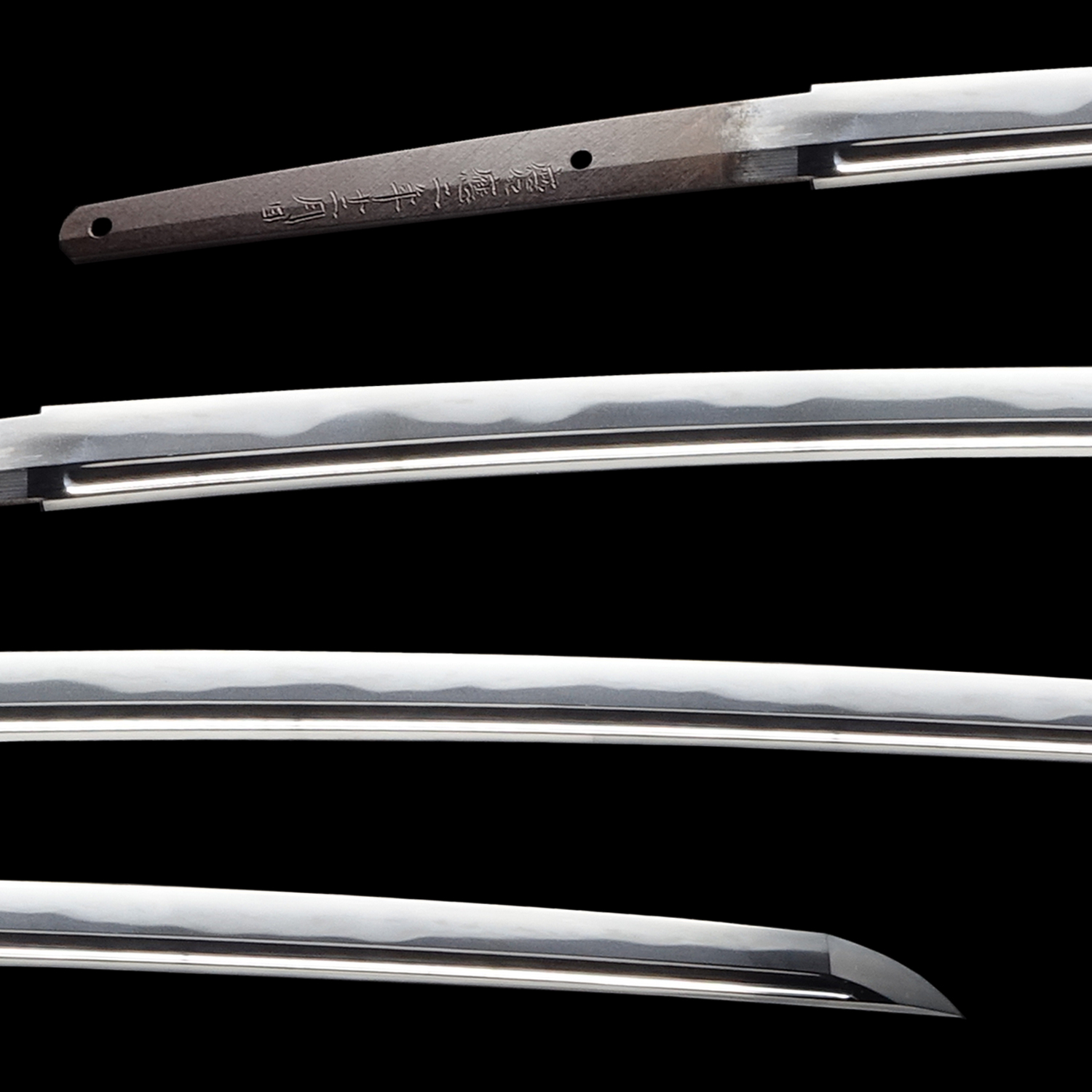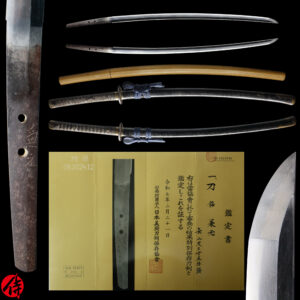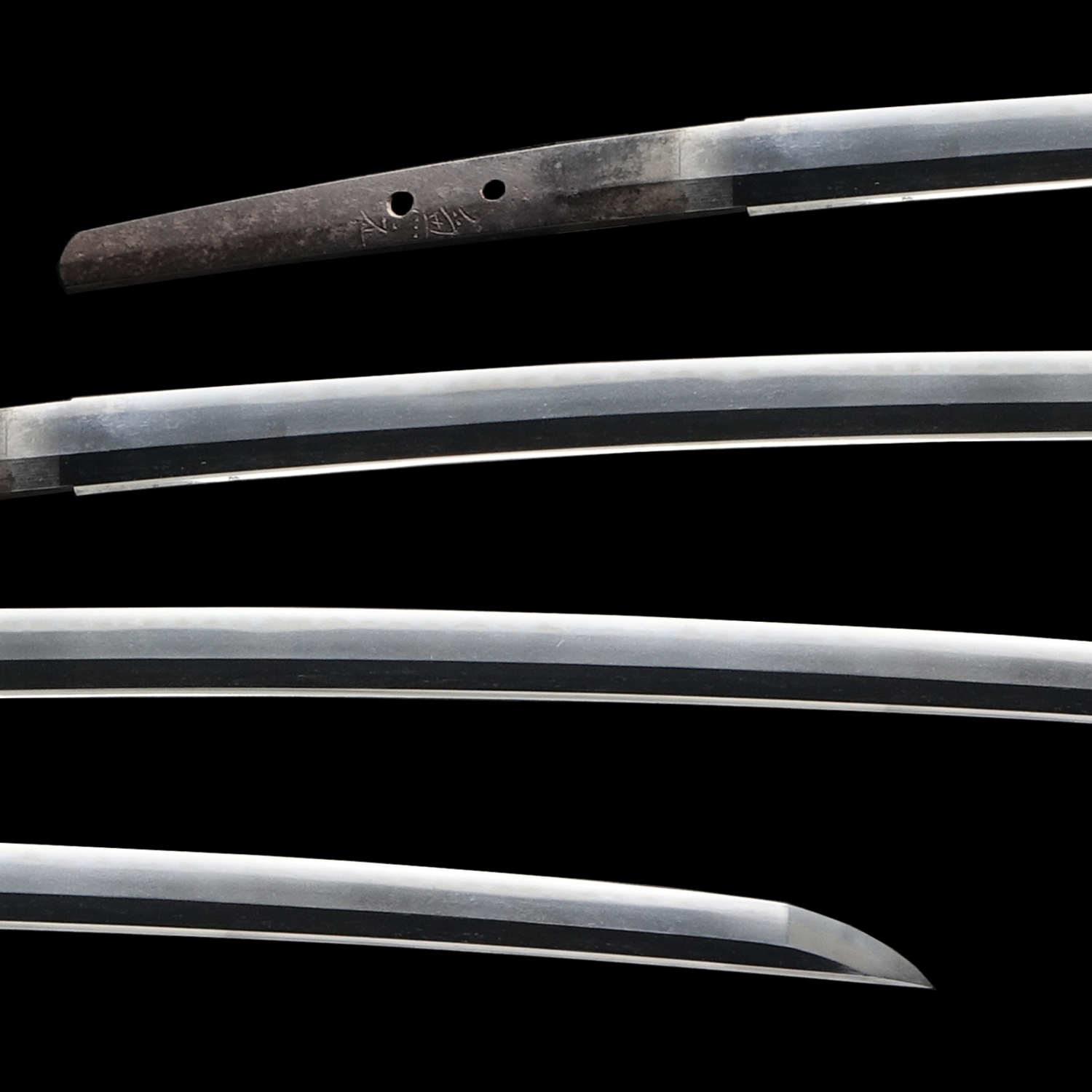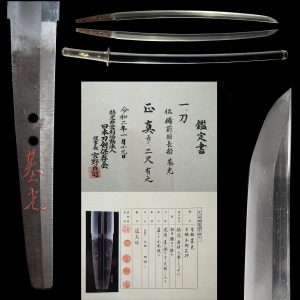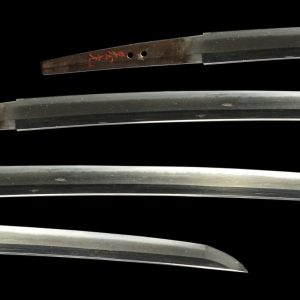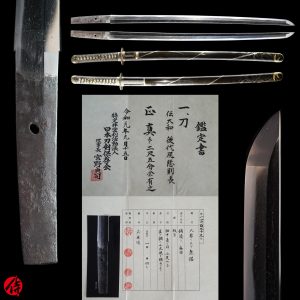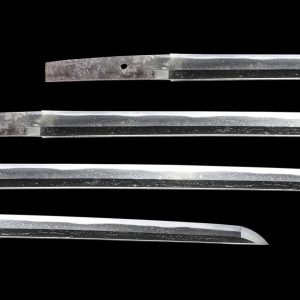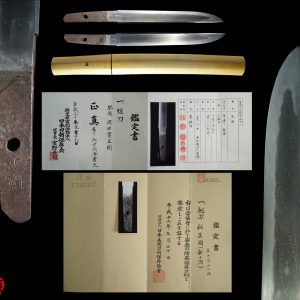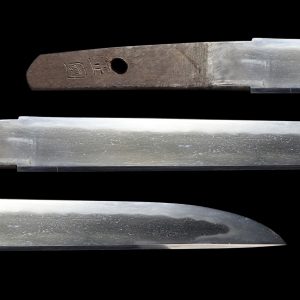Antique Japanese Sword Katana Attributed to Takada Muneyuki with Tokubetsu Kichou Certificate
【Description】
This blade is attributed to Takada Muneyuki (高田統行), a swordsmith of the prestigious Takada school (高田派). The name Muneyuki was used by three generations of smiths who were active from the Tenshō to Meireki eras (1573–1658). As confirmed over the phone with the NBTHK, this work is attributed to either the second- or third-generation Muneyuki, active during the early to mid-Edo period (17th–18th century).
The Takada school was founded by Takada Tomoyuki (高田友行) in Takada village, located in the Bungo domain (present-day Ōita Prefecture) during the Nanbokuchō period (1334–1338). Tomoyuki traveled to Bizen province (today’s Okayama Prefecture) to study the renowned sword-forging techniques of the Bizen tradition and, upon returning to Bungo, established his own school and trained many apprentices.
This marked the beginning of the Takada tradition, which became one of Kyushu’s most productive and respected sword-forging centers.
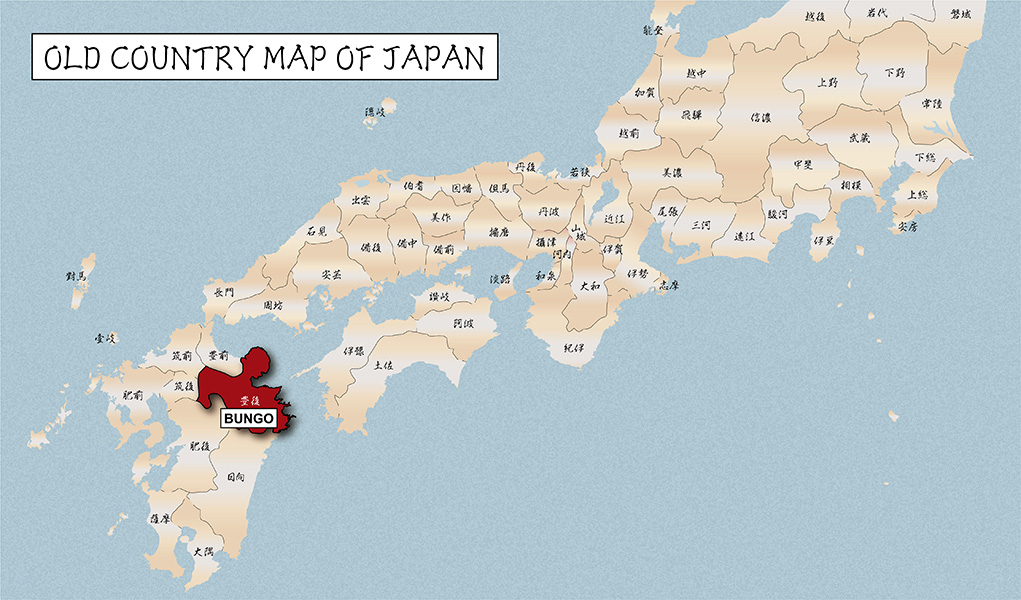
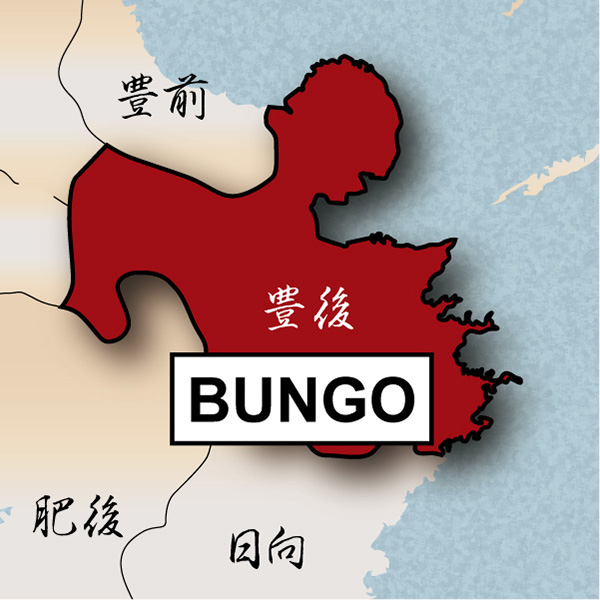
During the Sengoku period (the Warring States period, late 15th to late 16th century), the Takada school produced a large number of swords for samurai throughout Kyushu island. The blades forged by this school were highly valued for their reliability and sharpness—so much so that their reputation was said to rival those of the Mino and Bizen schools, two of Japan’s most celebrated sword-making traditions.
At that time, the Bungo domain was governed by Ōtomo Yoshishige (大友義鎮, also known as Sōrin), a prominent Christian warlord and one of Kyushu’s most powerful figures. Under his rule, the region prospered militarily and politically.
It is said that the Takada swordsmiths made blades for samurai who served the Ōtomo clan, and that the first-generation Muneyuki received the character “統” (Mune) of his maker’s name directly from the Ōtomo family. This symbolic gift represents the close relationship between the clan and the Takada school. Muneyuki’s craftsmanship and leadership helped establish Takada as a key sword-making center during the early Edo period.
In general, Kyushu thrived as a sword-producing region due to its long history of trade with continental Asia. The constant conflicts among feudal lords over trading rights increased the demand for fine weapons, and the Takada smiths were among the most sought-after in the region. The Takada school also benefited from its geographical advantage and rich natural resources. The surrounding Sobo-Katamuki mountain range (祖母傾山地) provided abundant iron sand (satetsu) and charcoal, essential materials for swordsmithing.
*Please keep in mind that there is a couple of black rust on the tip of the sword as well as tiny chips on the tip and a part of the blade. If you like to know more detailed condition, please feel free to contact us.
【 Blade】
Cutting Edge Length(Nagasa):104.0 cm (40.9 inches)
Curvature(Sori):2.2 cm (0.86 inches)

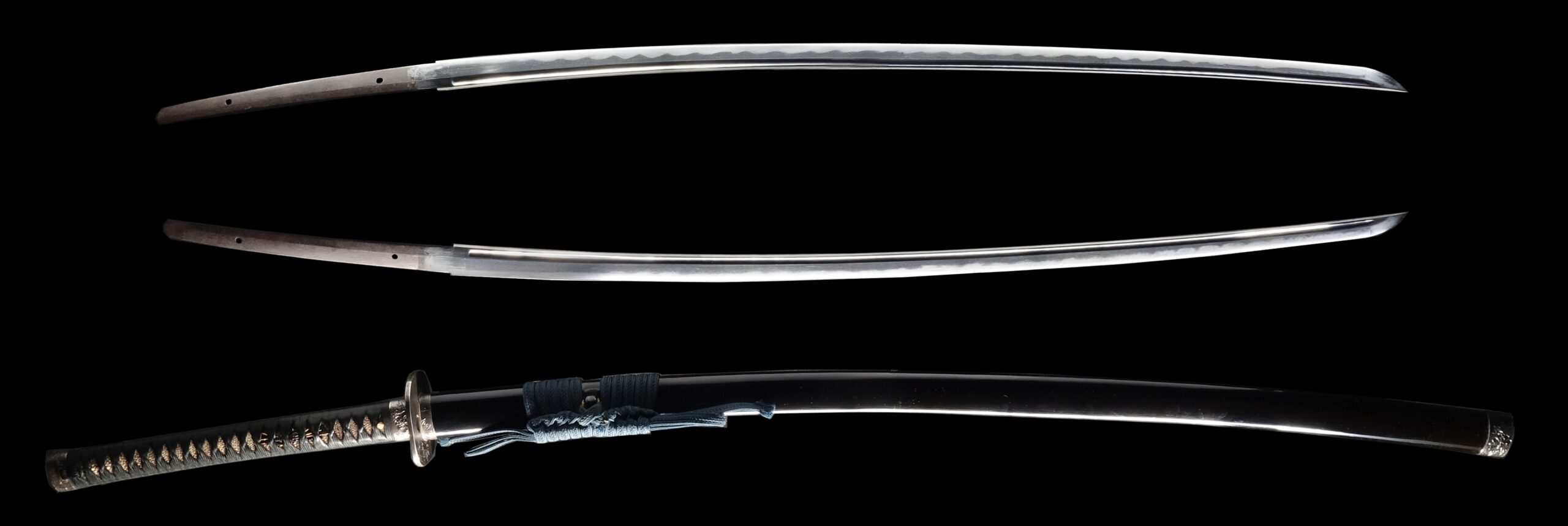
Hamon:
The crystalline structure which forms along the cutting edge of a blade as a result of the hardening process
Jimon(Jihada):
visible steel surface pattern created by folding and hammering during forging process
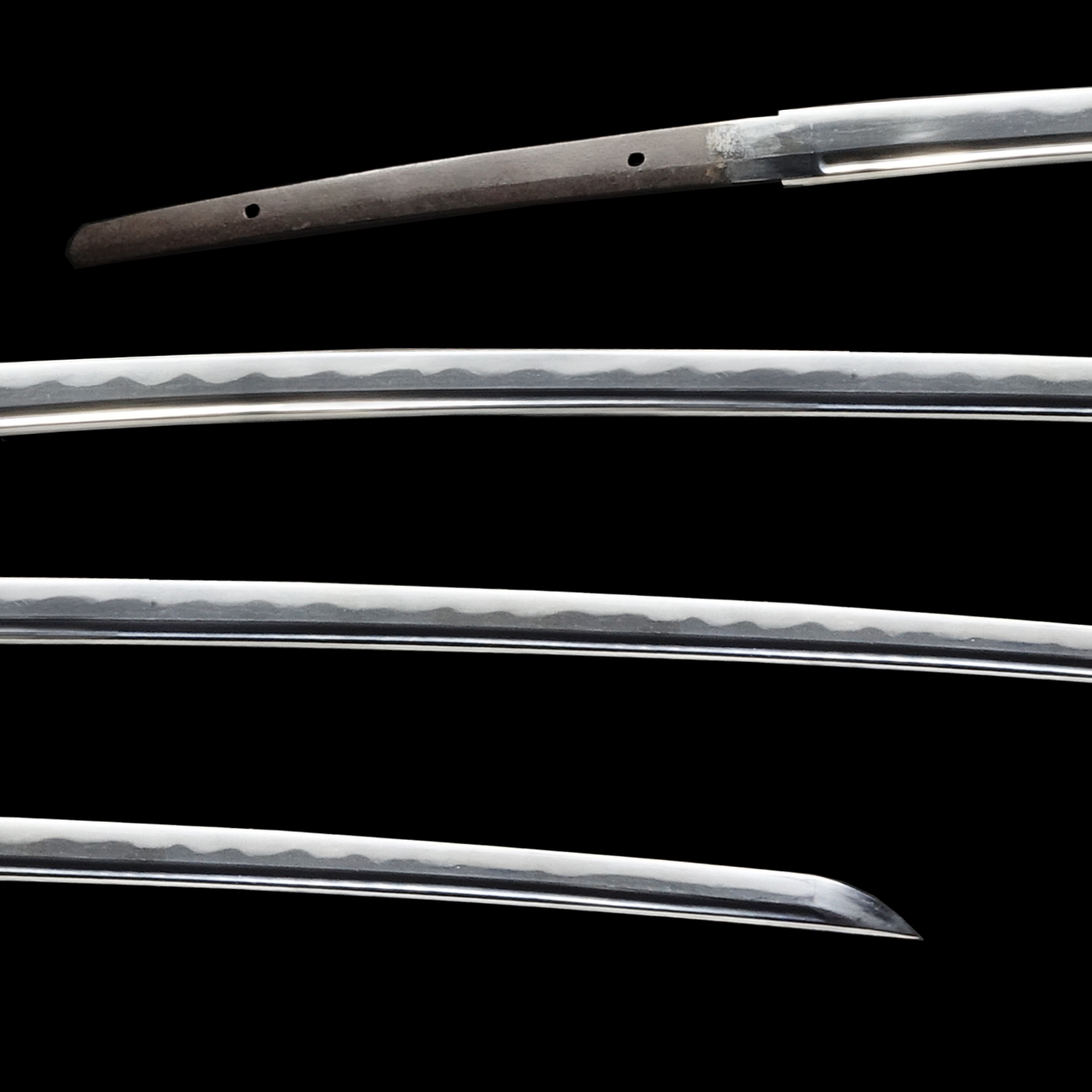
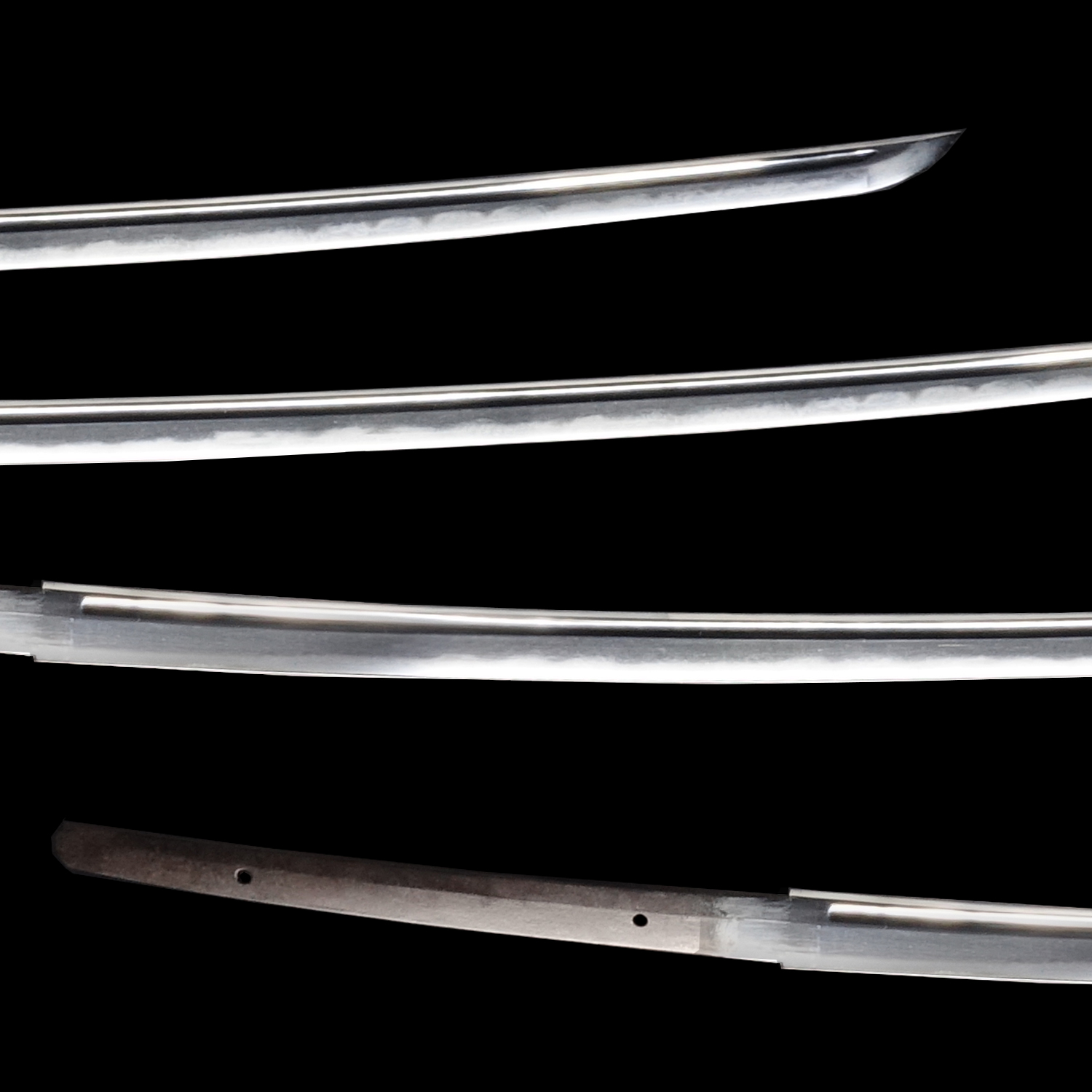
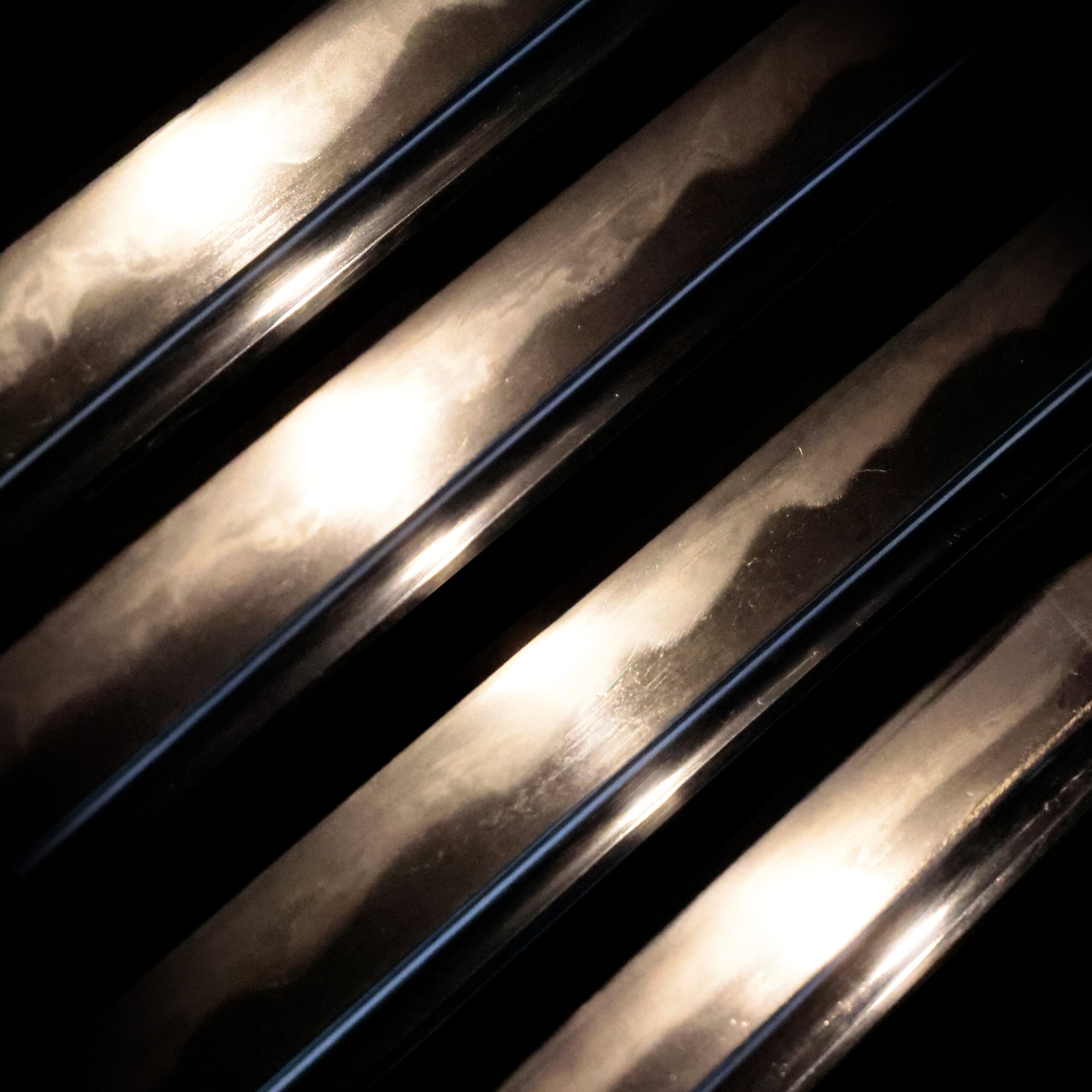
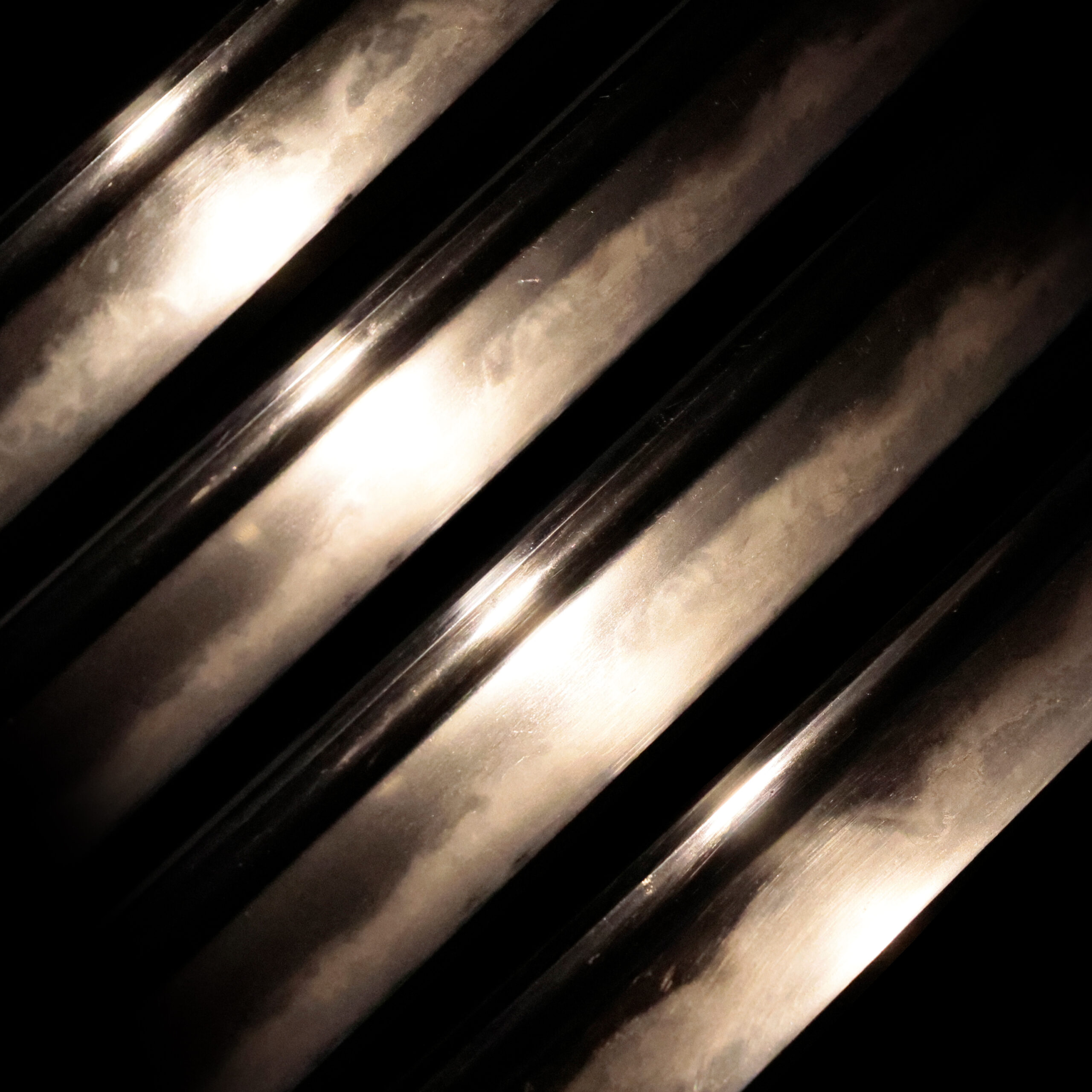
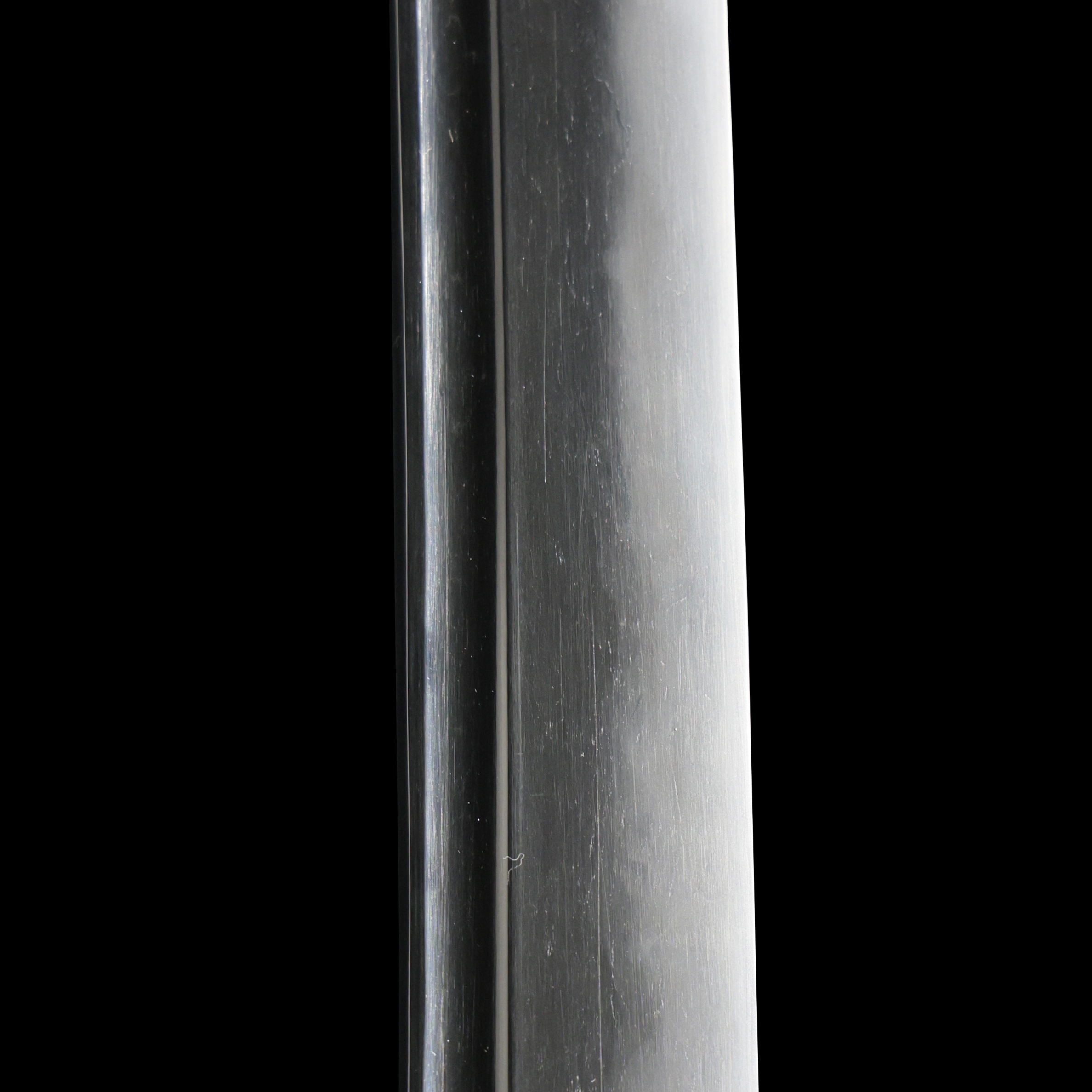
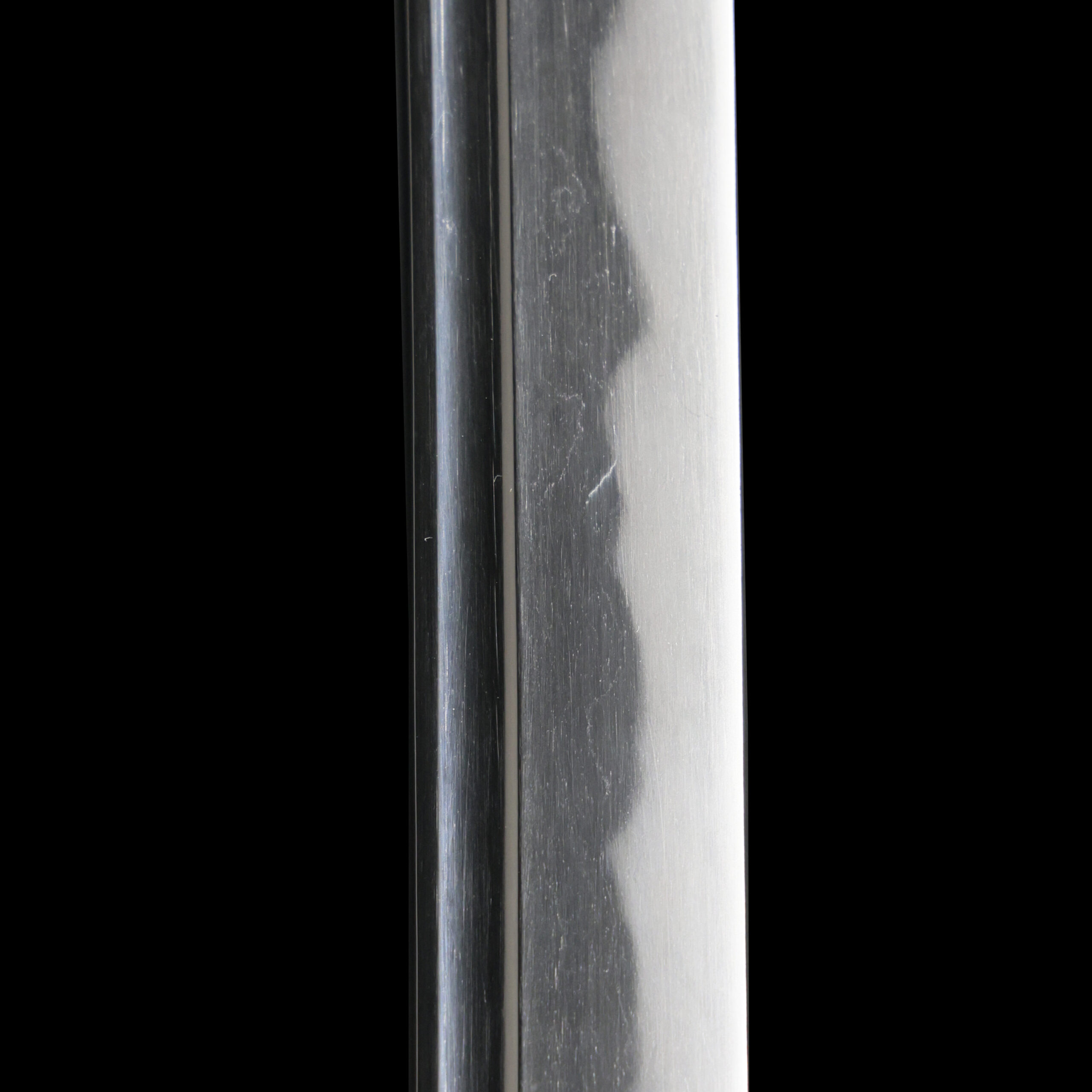
Kissaki:Kissaki is the tip of the Japanese sword.
*Please keep in mind that there are a couple of Kitae Kizu on this blade and its tip. If you like to know the detailed condition, please feel free to contact us.
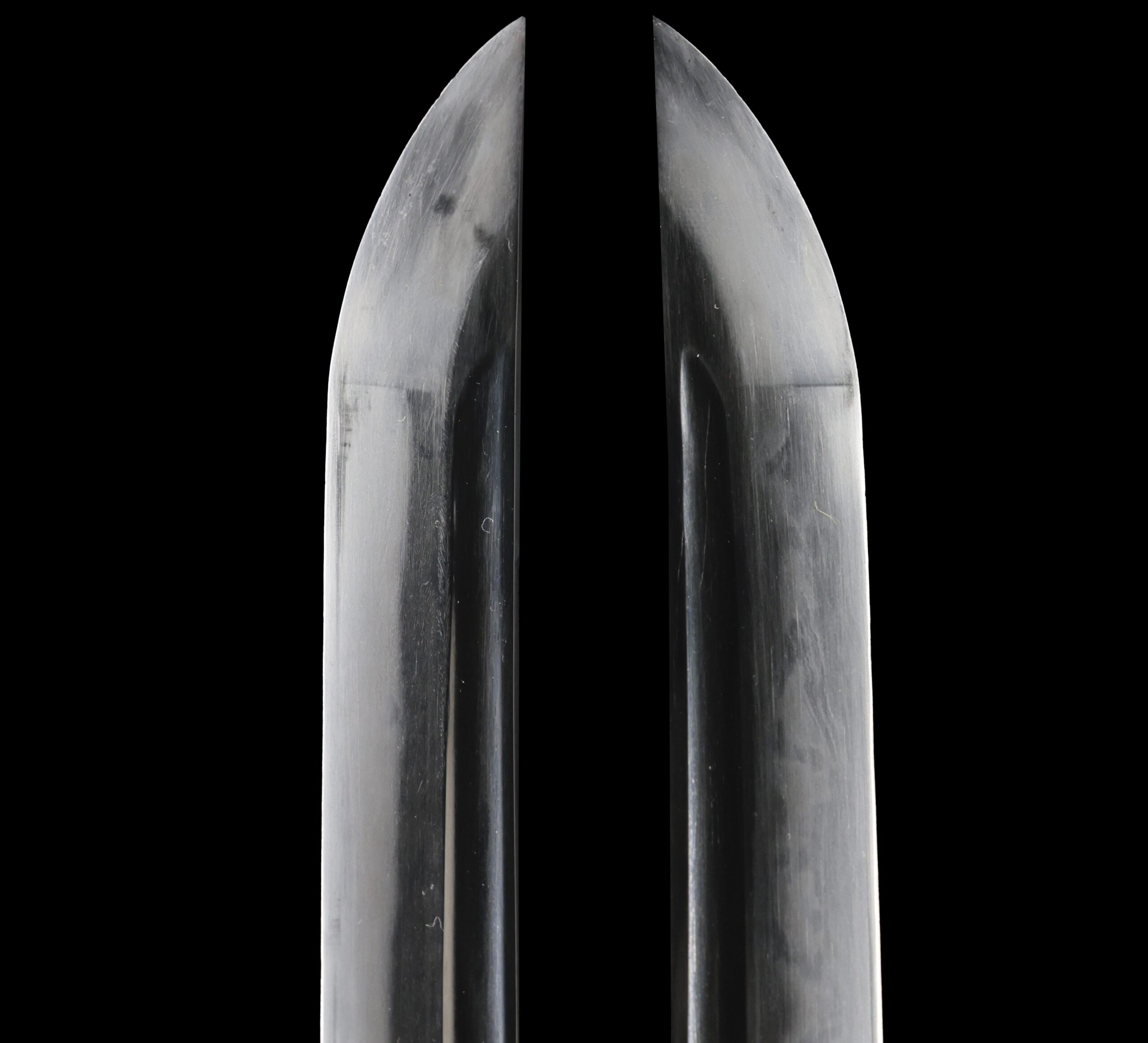
Nakago:Nakago is the tang of the Japanese sword.
Japanese swordsmiths left the black rust on the tang because it prevents red rust while the tang is in its handle. And the discoloration of the tang was created over time, and it is a great indicator for a Japanese sword specialist to estimate when the sword was forged.
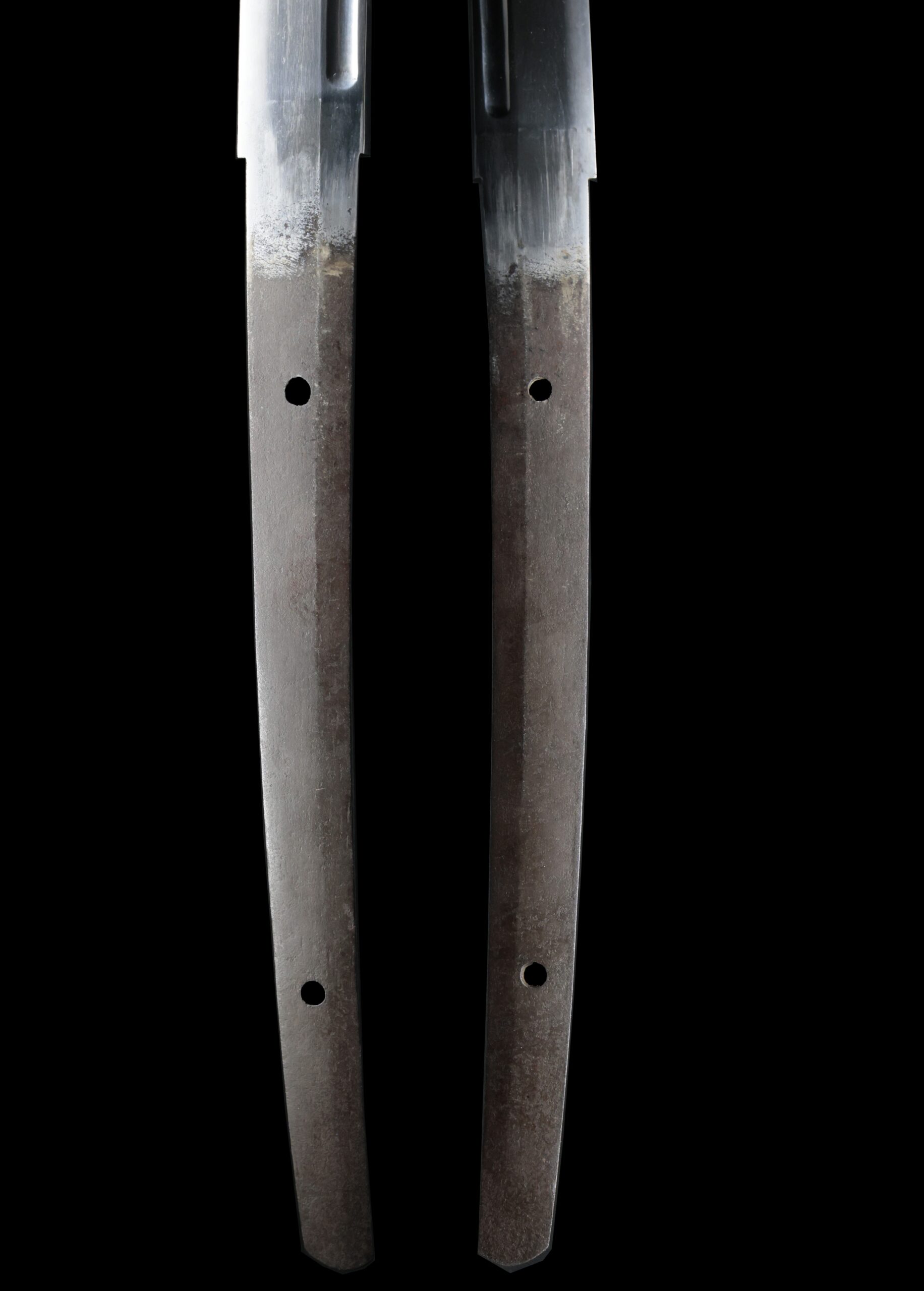
Koshirae:Koshirae is the mounting of the Japanese sword. There are several parts that consist of Koshirae such as Saya (Scabbard), Tsuka (Handle), Tsuba (Handguard).
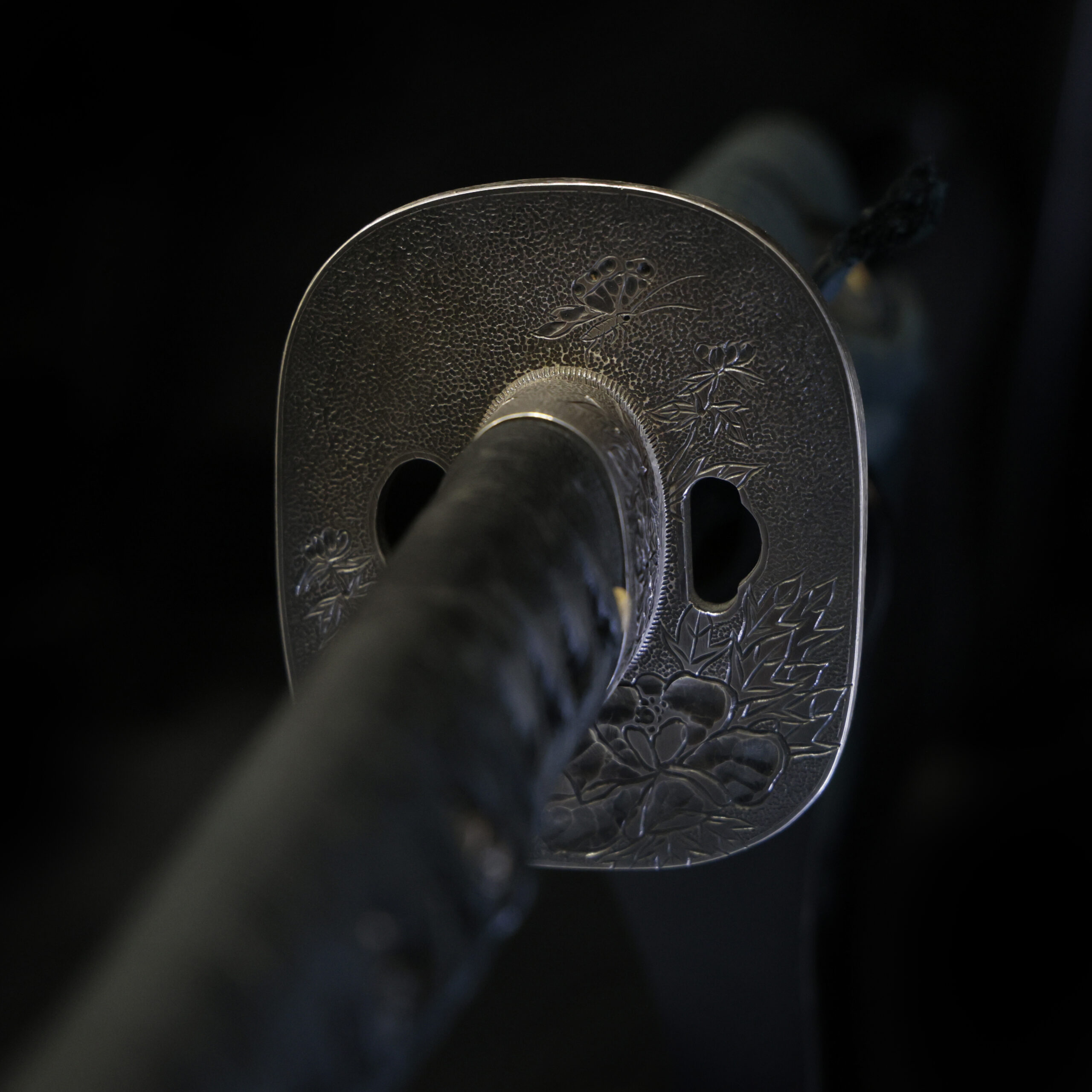
Fuchi-Kashira:A pair of matching sword fittings that cover the upper and bottom parts of its sword hilt.
The Fuchi-Kashira also features a peony motif, similar to the Tsuba. The material is likewise presumed to be silver.
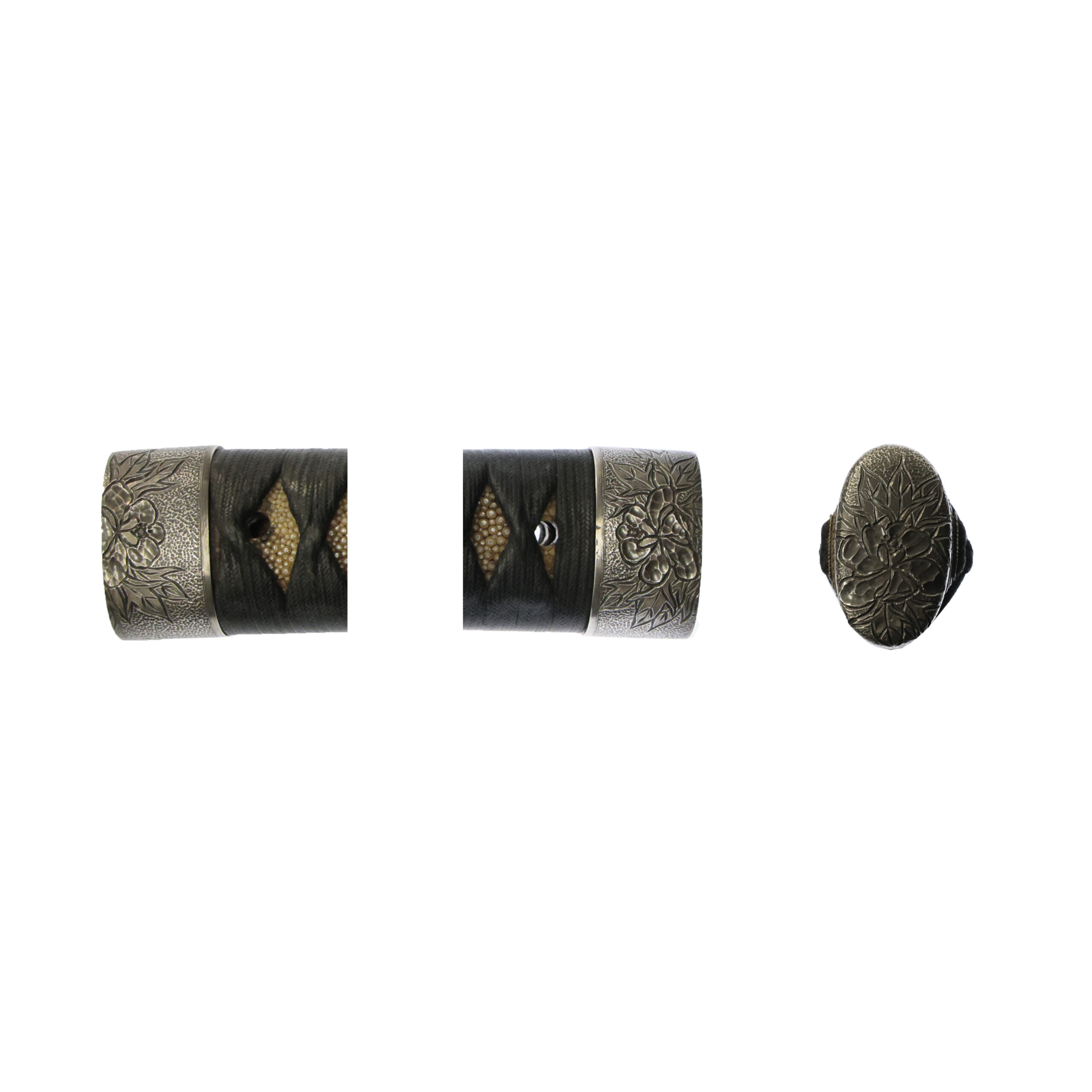
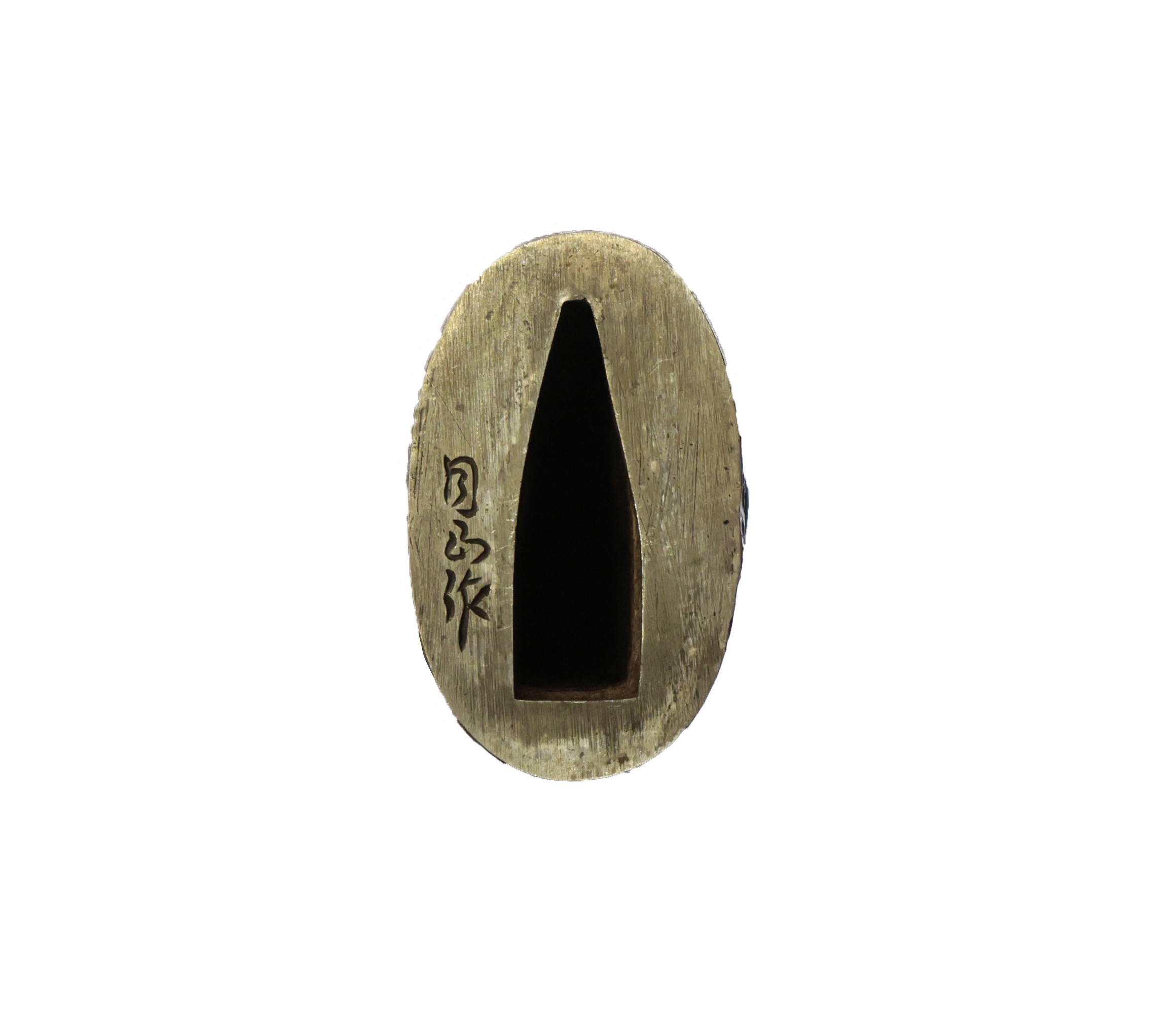
Tsuka and Menuki:Tsuka is the handle of the Japanese sword and Menuki is its decoration.
This large pair of Menuki depicts the theme of “The Spider’s Thread(蜘蛛の糸).” At the center, an oni (鬼, demon) is shown holding a golden club (金棒, kanabō) entangled in spider silk, symbolizing the thin yet powerful thread that connects heaven and hell. The motif draws inspiration from the Buddhist tale of salvation known in Japan as “Kumo no Ito” (The Spider’s Thread) by Ryūnosuke Akutagawa. Interestingly, Akutagawa’s story itself was inspired by “The Wheel of Karma,” a short story by Paul Carus, an American writer and philosopher whose works introduced Buddhist thought to the West. In both versions, the Buddha lowers a spider’s thread into hell, offering a single sinner a chance at redemption — a profound reflection on compassion and human ego.
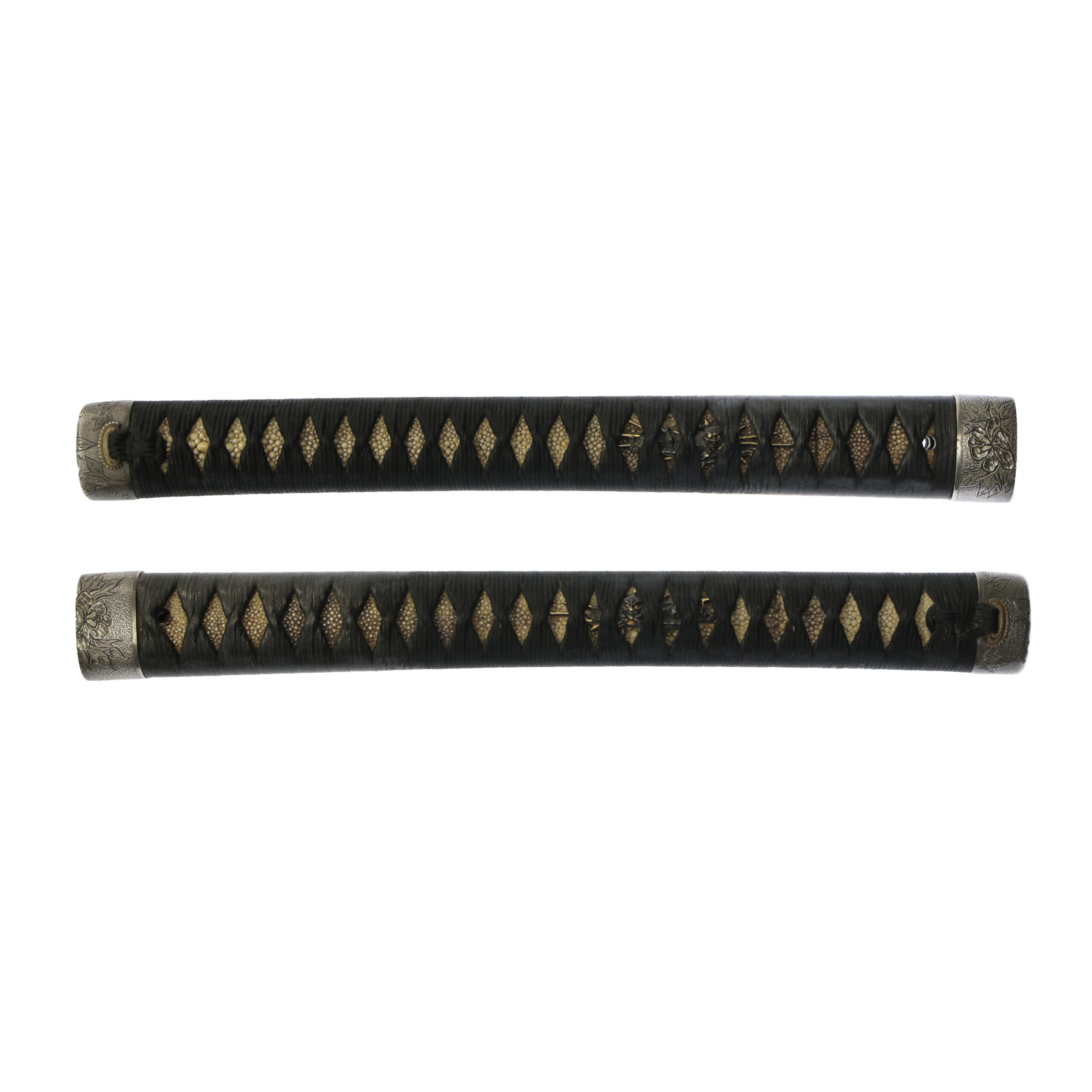
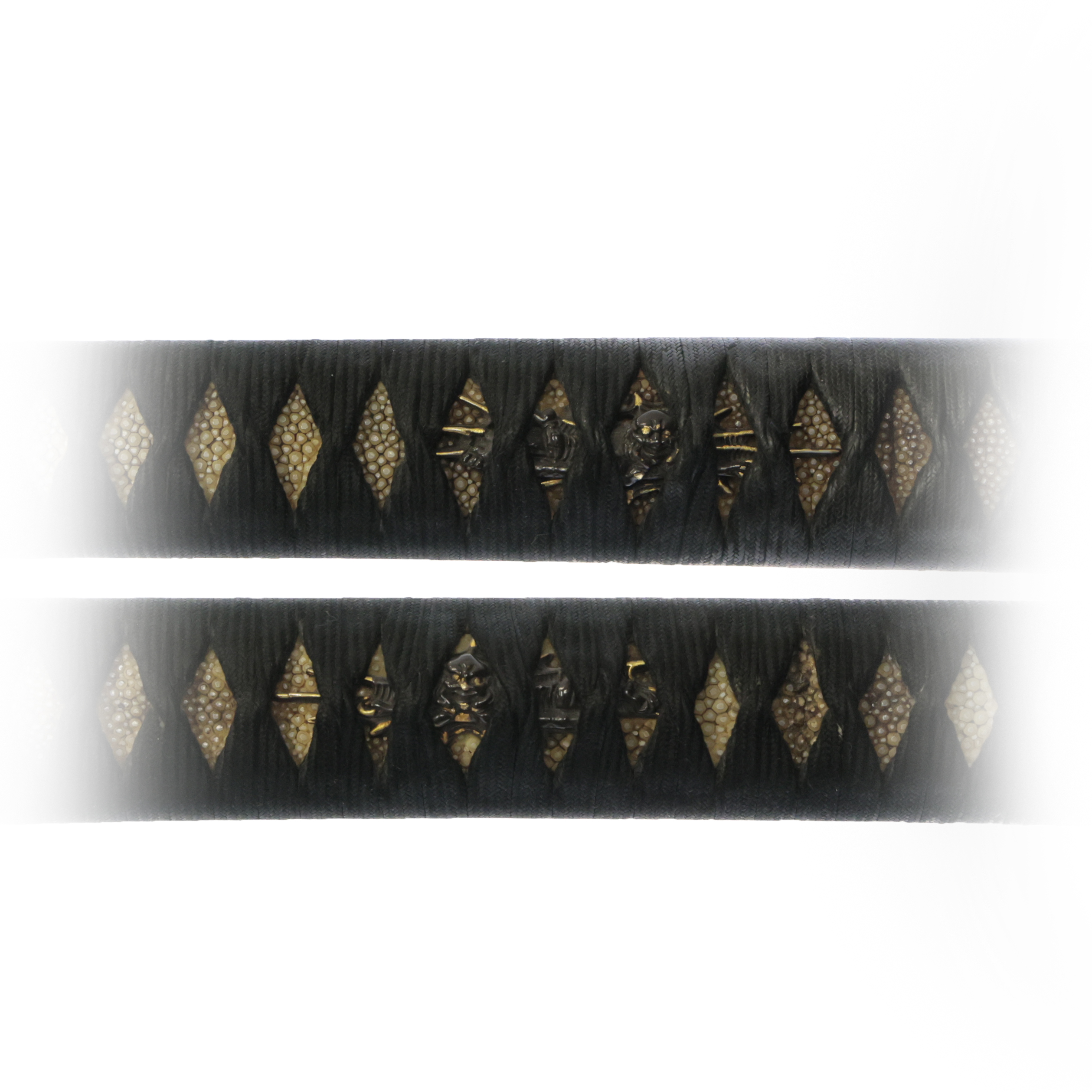
Tsuba and Habaki:Tsuba is the handguard for the Japanese Sword and Habaki is the equipment to make the blade not touch its scabbard inside. It prevents the blade from getting rusty and chipped.
This large Tsuba, which appears to be made of silver, features motifs of peony (牡丹).
The peony represents happiness, wealth, nobility, and gorgeousness. This flower pattern has long been regarded as an auspicious motif, symbolizing prosperity and a rich harvest. In Japanese, the peony is called “Botan.” The second character in its Japanese name (丹) originally refers to the “elixir of immortality” used by mountain hermits in ancient times. Because of this association, the peony motif also carries the meaning of eternal youth and longevity.
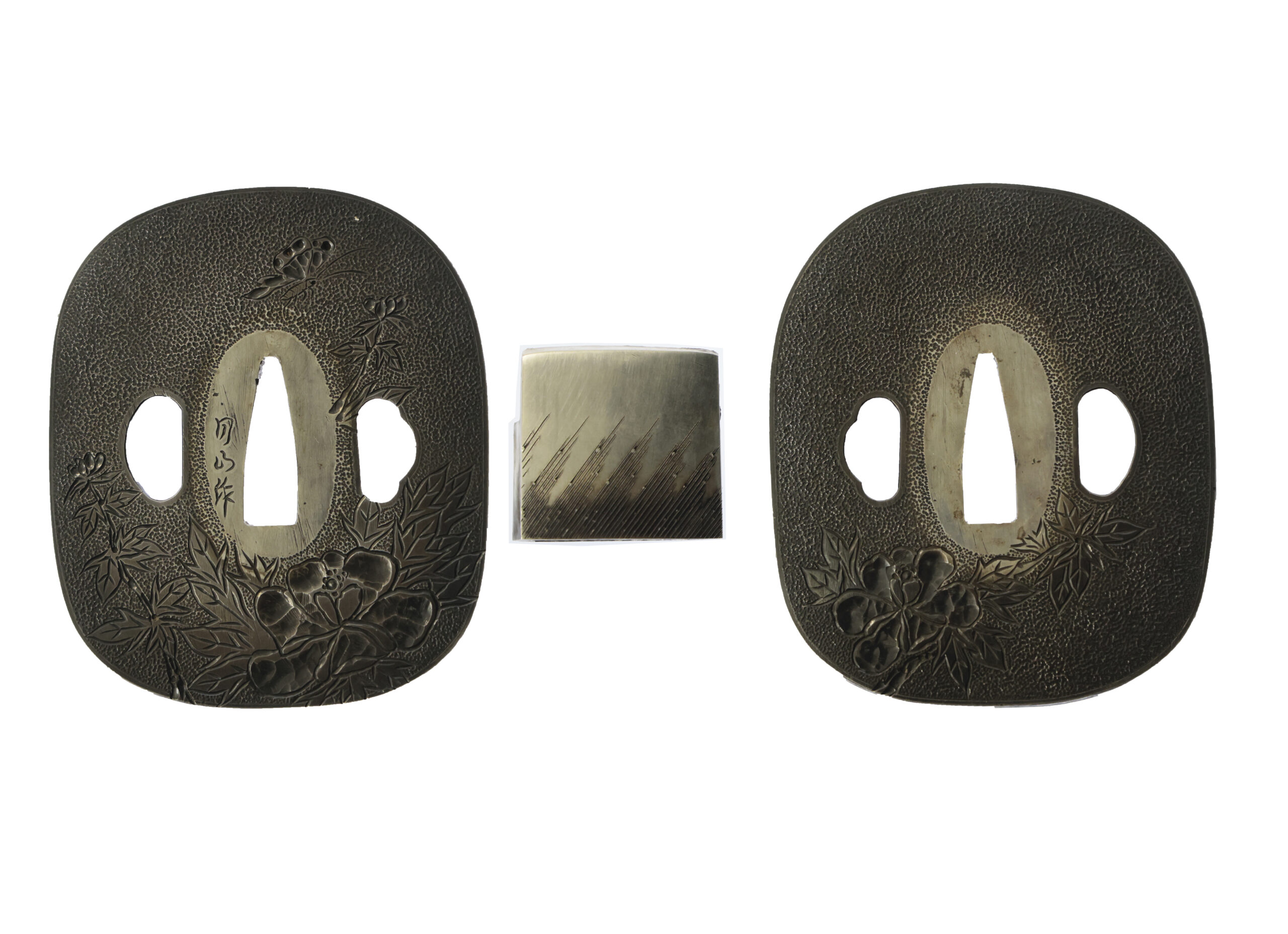
Saya:Saya is the scabbard for the Japanese sword.
This scabbard is covered with black lacquer. Due to its high waterproof effect, lacquer has been used since ancient times in Asia. The blade of a Japanese sword is made of iron, and moisture is the greatest enemy of iron. For the purpose of carrying the blade without degrading it, people devised a method of coating the scabbard with lacquer. To prevent not only moisture but also rain and snow from penetrating the inside of the scabbard, it was necessary to apply multiple layers of lacquer. The Nushi (塗師, lacquerers) was born precisely because advanced techniques were required to handle the complicated processes.
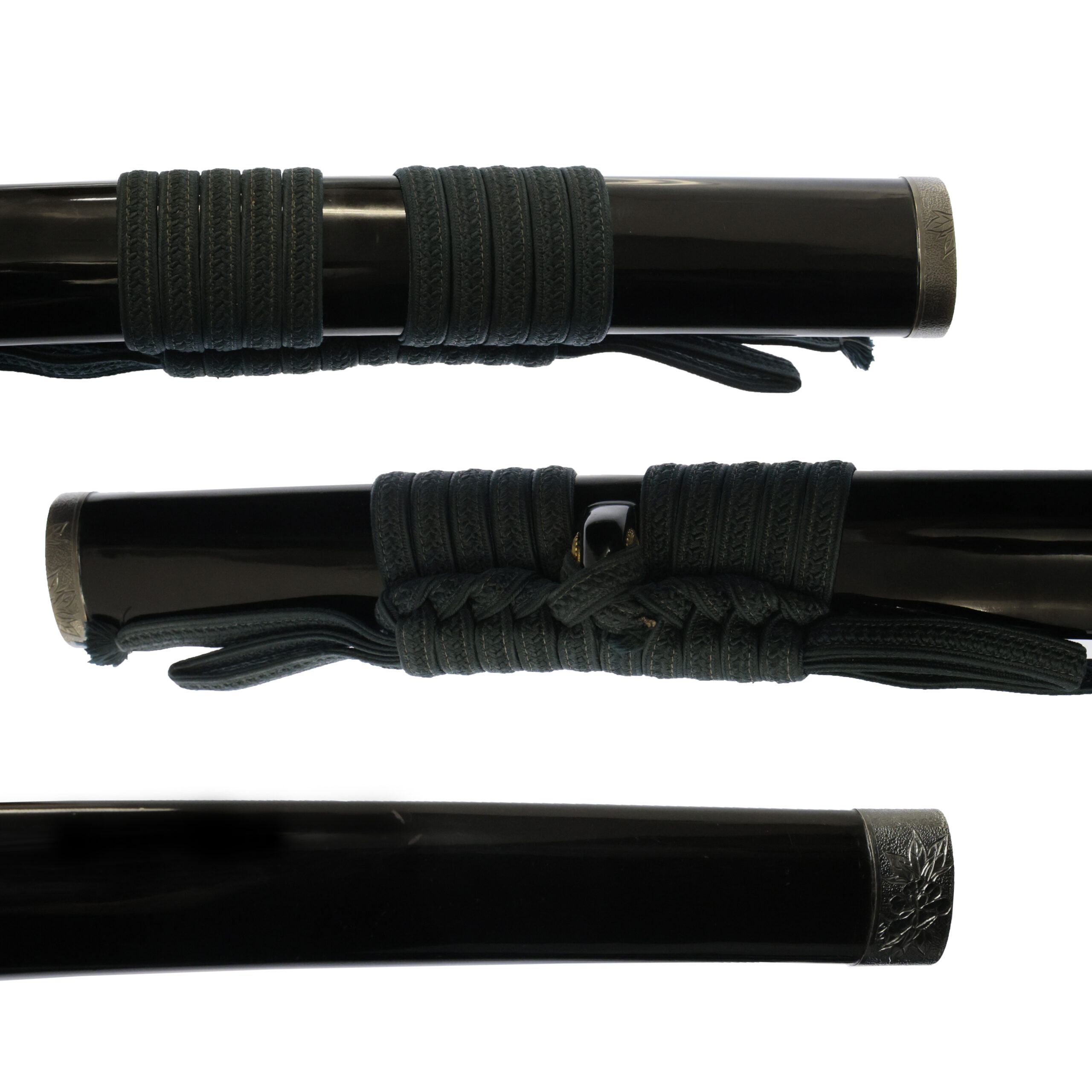
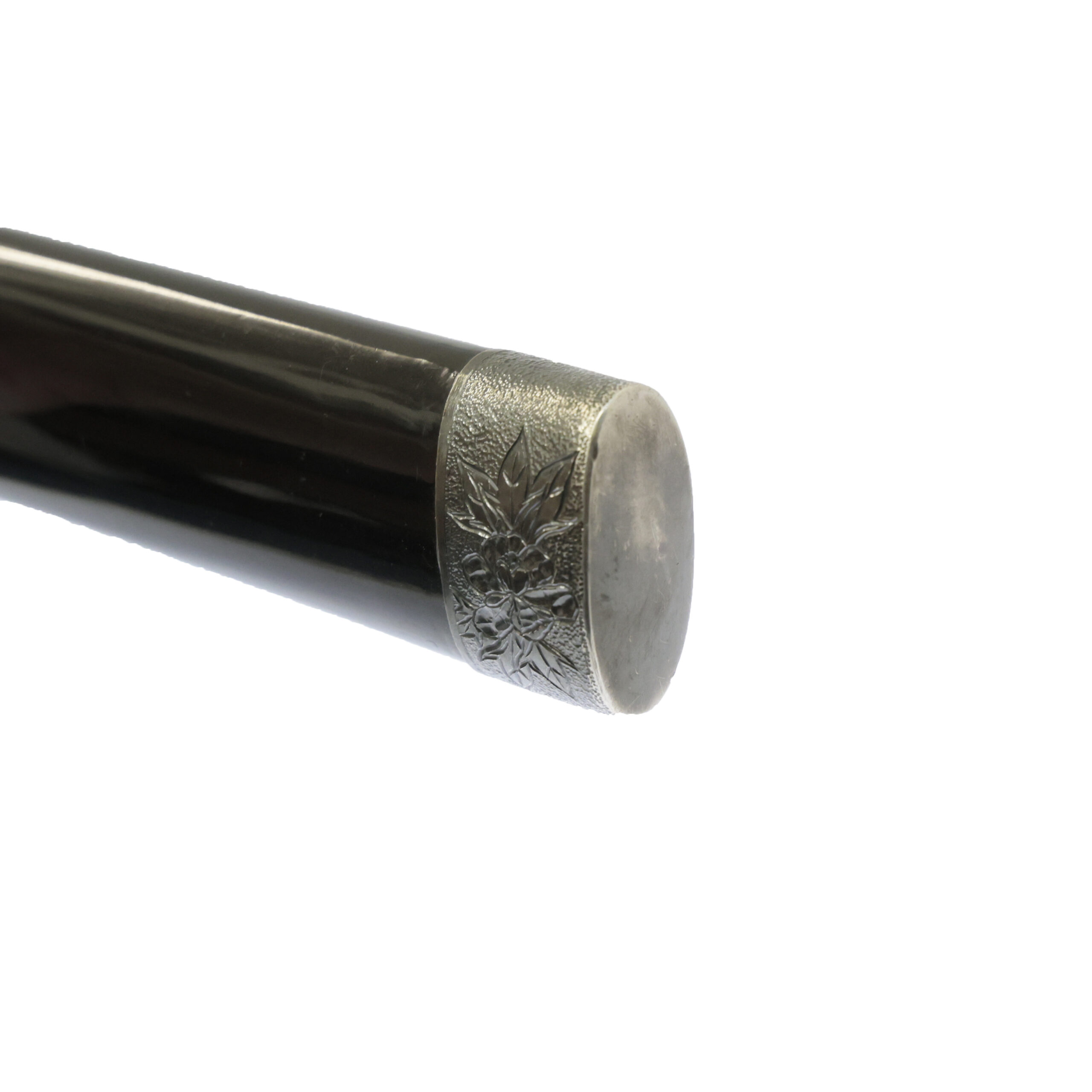
Authentication Paper:NBTHK TOKUBETSU KICHOU Certificate for the blade (No. 270337)
NBTHK, also known as Nihon Bijutsu Touken Hozon Kyokai (the Society for the Preservation of the Japan Art Sword), is one of the oldest Japanese sword appraising organizations in modern-day Japan. They authenticated the blade on February 25th in the 48th year of Showa (1973). They appraised it as Tokubetsu Kichou Touken, an old form of the certificate. The purchaser will receive this original certificate as well. We can also translate what is written into English and make a PDF file for your record if you request.
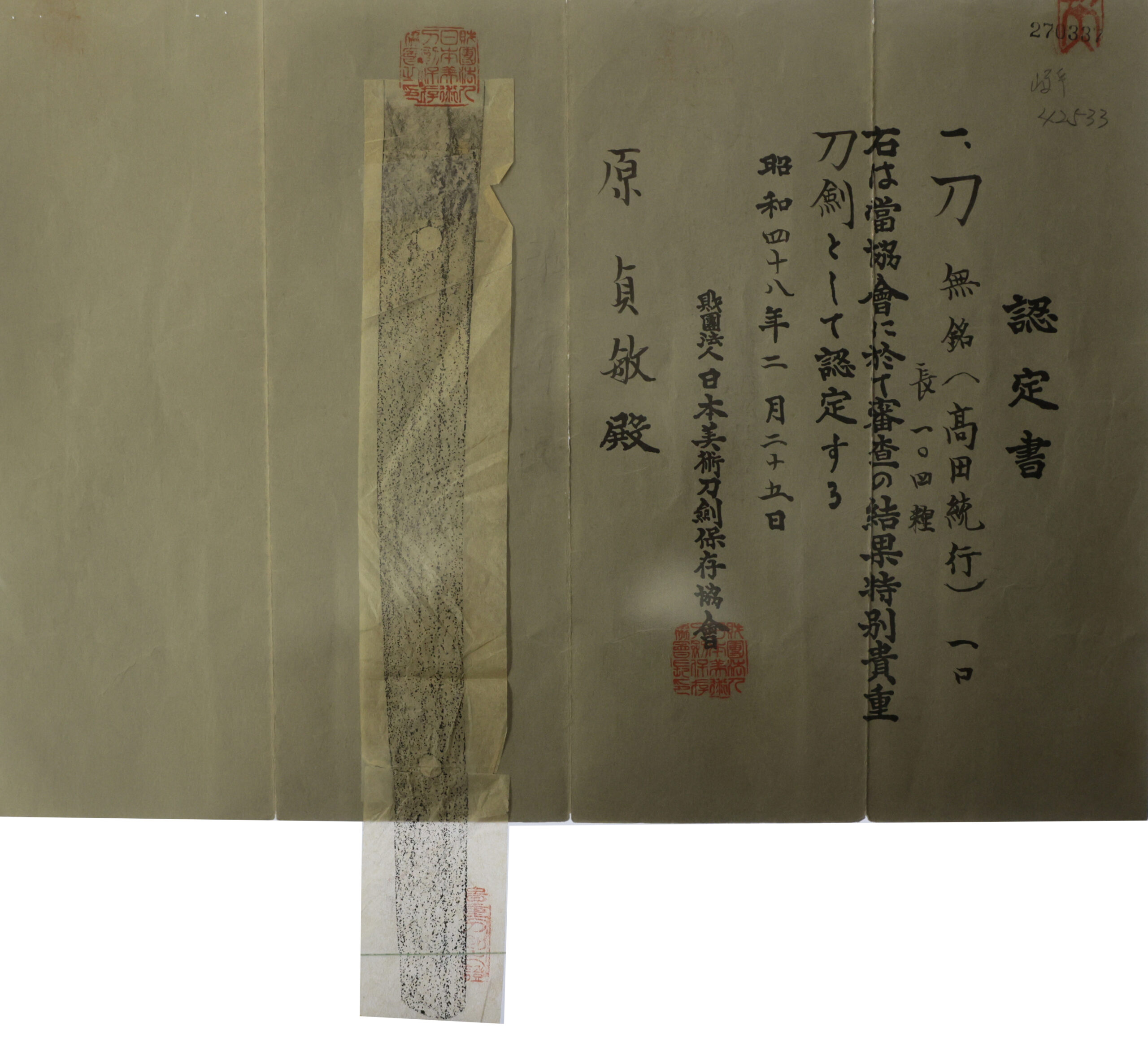
Registration Number : Gifu 42533
The Board of Education in Gifu prefecture issued a registration paper for this sword. It is called Jyu Token Rui Torokusho (銃刀剣類登録証). Bunkacho (The Agency for Cultural Affairs) acknowledges a Japanese sword with this paper as a work of art.
The sword needs to be traditionally hand-forged and made of Tamahagane carbon steel to be registered in the system. With this paper, its owner in Japan can legally own an authentic Japanese sword. Based on this registration number, we will apply for its export permit.
This paper will need to be returned to the board of education when the sword is being shipped abroad, but you can receive a copy of it. An English translation of this registration paper is available on request.
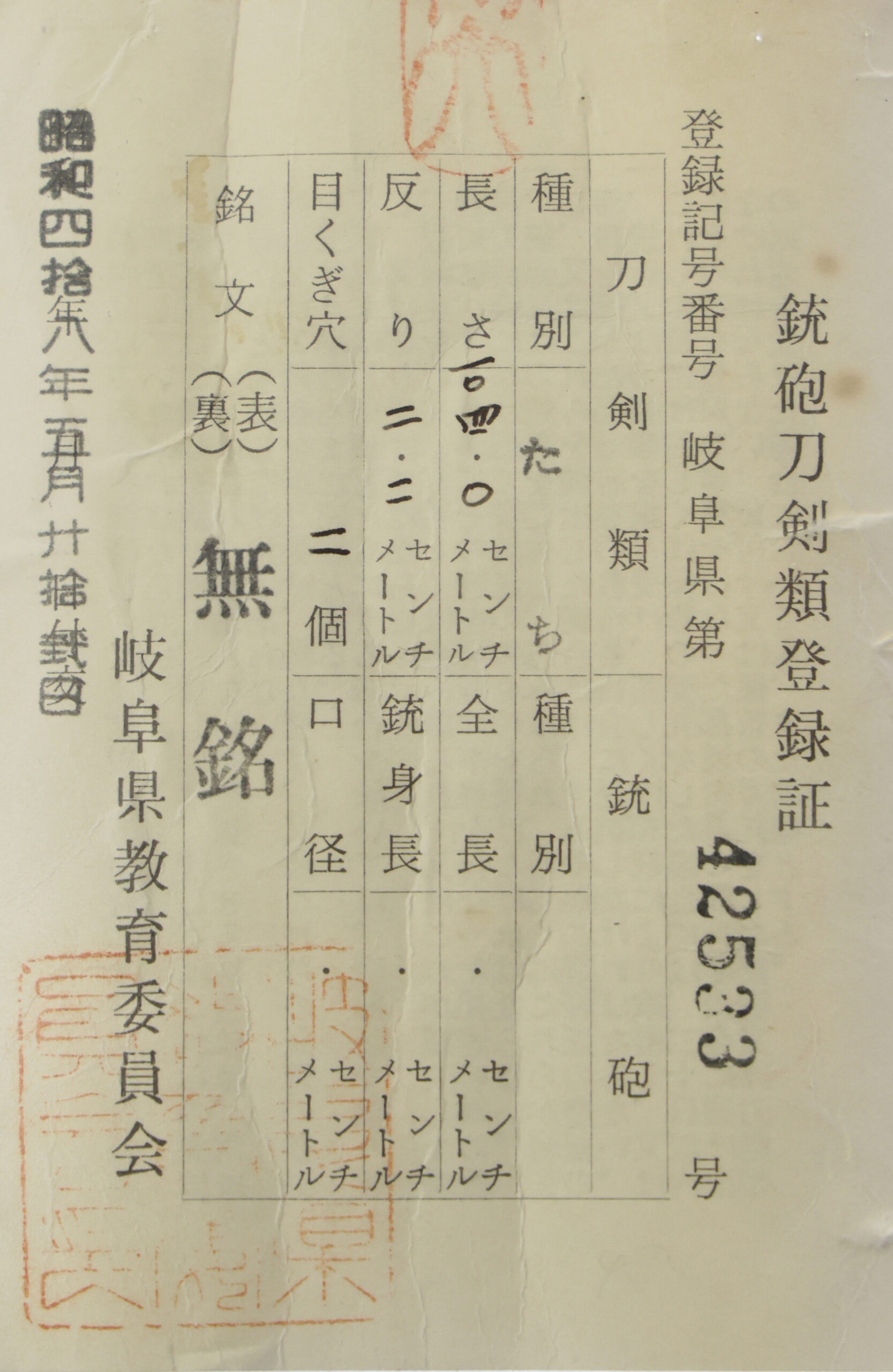
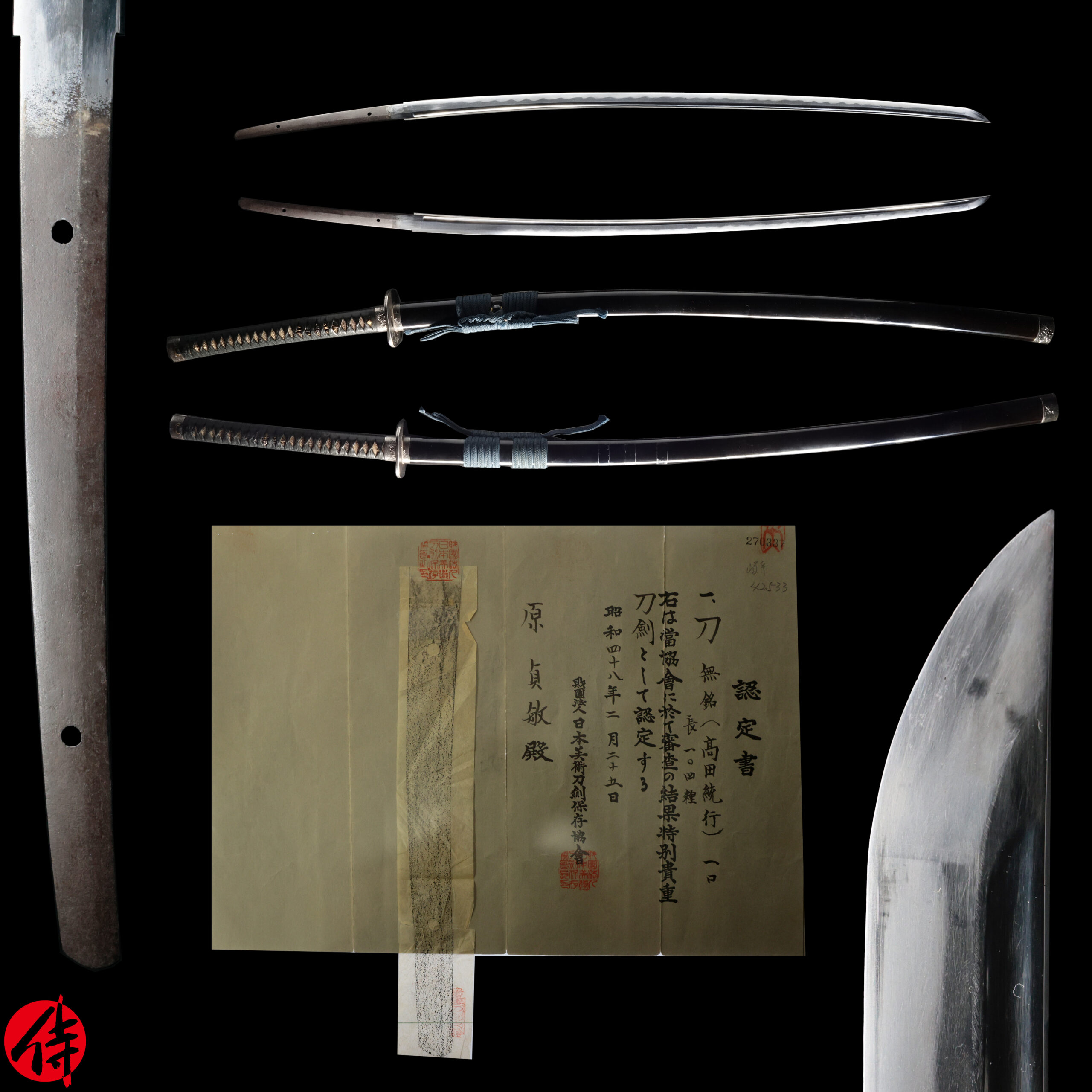
—————————————————————–
【About us】
Samurai Museum is located in Tokyo, Japan, exhibiting antique artifacts related to the Samurai history. Samurai Museum Shop is the place for those who are interested in Japanese culture and craftsmanship. We deal with antique Samurai swords/armor, traditional crafts made in Japan and so on.
【Japanese Sword& Export Process】
The Japanese swords we deal with are hand-forged edged swords made in Japan. It was made from the traditional carbon steel called TAMAHAGANE(玉鋼). Samurai Museum is familiar with the proper legal procedure for an antique/ authentic Japanese sword to be exported from Japan. We have sent more than 1000 Japanese swords for the past few years (~2025) to amazing owners who appreciate its historical value.
Each Japanese sword is registered under the Agency for Cultural Affairs and the Board of Education in Japan. They issue a registration paper for each Japanese sword for its owner in Japan to legally possess it. The Japanese sword with its registration paper means it was traditionally hand-forged in Japan.
To legally export the sword from Japan to other countries, we will have to apply for its permit to the Agency for Cultural Affairs(Bunkacho) and return the original registration paper to the Board of Education. It normally takes around 2-4 weeks to receive this permit after submitting required documents. And we would like you to expect at least 1-1.5 months for your order to arrive at your given address after you ordered. For more detailed info, please click here.
It is allowed for residents in Japan to own authentic Japanese swords without a special license as long as they come with registration papers. Please feel free to contact us if you are a resident of Japan, whether temporarily or permanently. We will also assist you when you leave Japan and need to obtain the export permit.
【Payment Method】
We accept payment through Stripe (Credit card), PayPal, Apple Pay or ChromePay, all of which are secure payment methods. Also, you don’t need to make an account on Stripe for the checkout. If you prefer other payment method, please contact us. After confirming your payment, we will apply for an export permit. You may either pay in JPY, USD, AUD, CAD,EUR CHF or GBP. The price is set in Japanese Yen. Prices in other currencies are automatically calculated based on the latest exchange rate.

* If the amount is above 1 million JPY, Stripe or wire transfer will be the only options for payment.
【Shipping】
We have shipped authentic Japanese swords to the USA, Canada, Mexico, Germany , Belgium, France, Finland, Hong Kong, Australia. If you don’t live in these countries and like to order, please contact us first before making a purchase. We offer Free International Shipping as long as we can send antique Japanese swords by EMS.
We normally ship by EMS(Express Mail Service) provided by Japan Post. We will send you a tracking number for your order as soon as we hand it to the post office. We will put 100 % insurance on the shipping document without any extra charge. Based on the total amount, there might be a duty tax or other fee for you to pay, depending on the countries. We use package cushioning to protect the item and put it in a PVC pipe, which is one of the most secure packages because of its durability.
It will normally takes 5-14 days for the item to arrive at your given address after we dispatch it. Time of delivery is estimated as accurately as possible by the carrier but does not take into account any delays beyond our control such as by inclement weather, post office holiday seasons.
* If you live in Australia and like to purchase an authentic Japanese sword, please click here to know the detail.
* If you live in the UK and like to purchase an authentic Japanese sword, please contact us first and click here to know the detail.

【Review】
Here is one of the reviews we received from a customer who purchased an authentic Japanese sword from us. For more reviews, please click here.
“My experience overall with the whole process was wonderful. I had many questions about the history and process to purchase these treasures. All my questions were answered very timely and complete. The staff is very knowledgeable and very well versed if any questions do arise.”
【How to make sure the condition】
Please keep in mind that what you are going to purchase is an antique item. We uploaded high resolution photos for you to check its condition thoroughly. If you like to see more photos with different angles, please feel free to contact us. We will be happy to send them to you so that you can make informed decision. It is essential for us to know that you are happy with your choice of a sword. and we are prepared to use the best of our ability to serve you.
【How To Contact Us】
Please contact us through email, Facebook Messenger or Live Chat if you have any questions. You can find each icon on the right side of the website. Please click one of them to reach us. We will reply to you within 1-2 business days.
【The Art of Nihonto (Japanese Sword)】
Samurai’s history is a profound, eloquent legacy of ancient Japanese warriors in which millions of people worldwide are being fascinated. If you like to find out the art of Nihonto, please click here.
【A Guide to Japanese Sword Maintenance】
After acquiring an genuine Japanese sword, it is also important to know how to take good care of it. Here is the special video for you. Mr. Paul Martin, Japanese sword expert, shows you how to give proper maintenance to your sword. By mastering how to clean the Japanese sword, its aesthetic beauty will last forever.
When you purchase a Japanese sword from us, you can get a Free Japanese sword maintenance kit. It comes with four tools(Choji Oil, Uchiko Whetstone Powder, Peg remover, Oil Applicator). By watching the video instruction above , you can enjoy learning how to maintain your Japanese sword while appreciating it. If you have any difficulty assembling the sword or cleaning the blade, you can feel free to contact us.
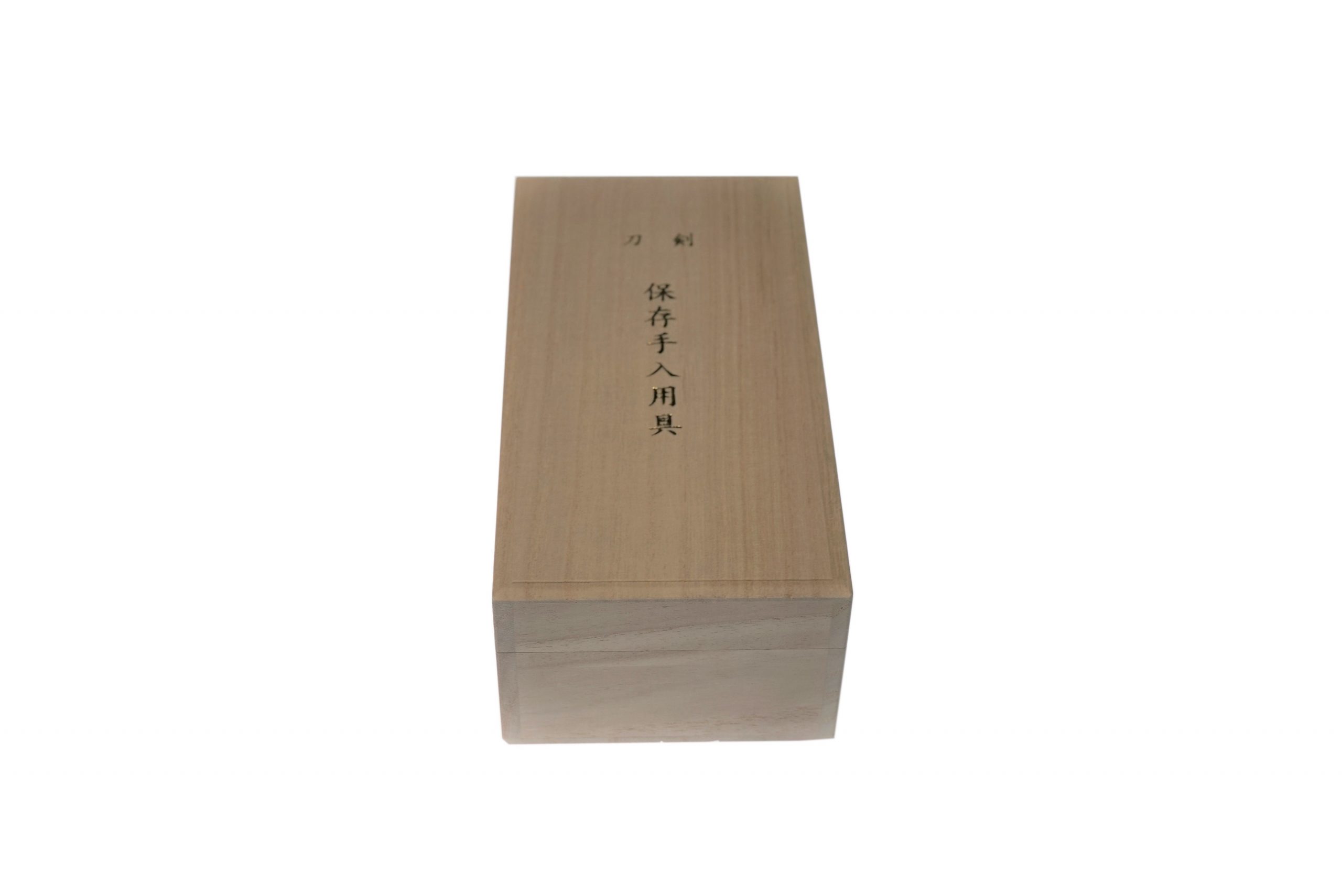
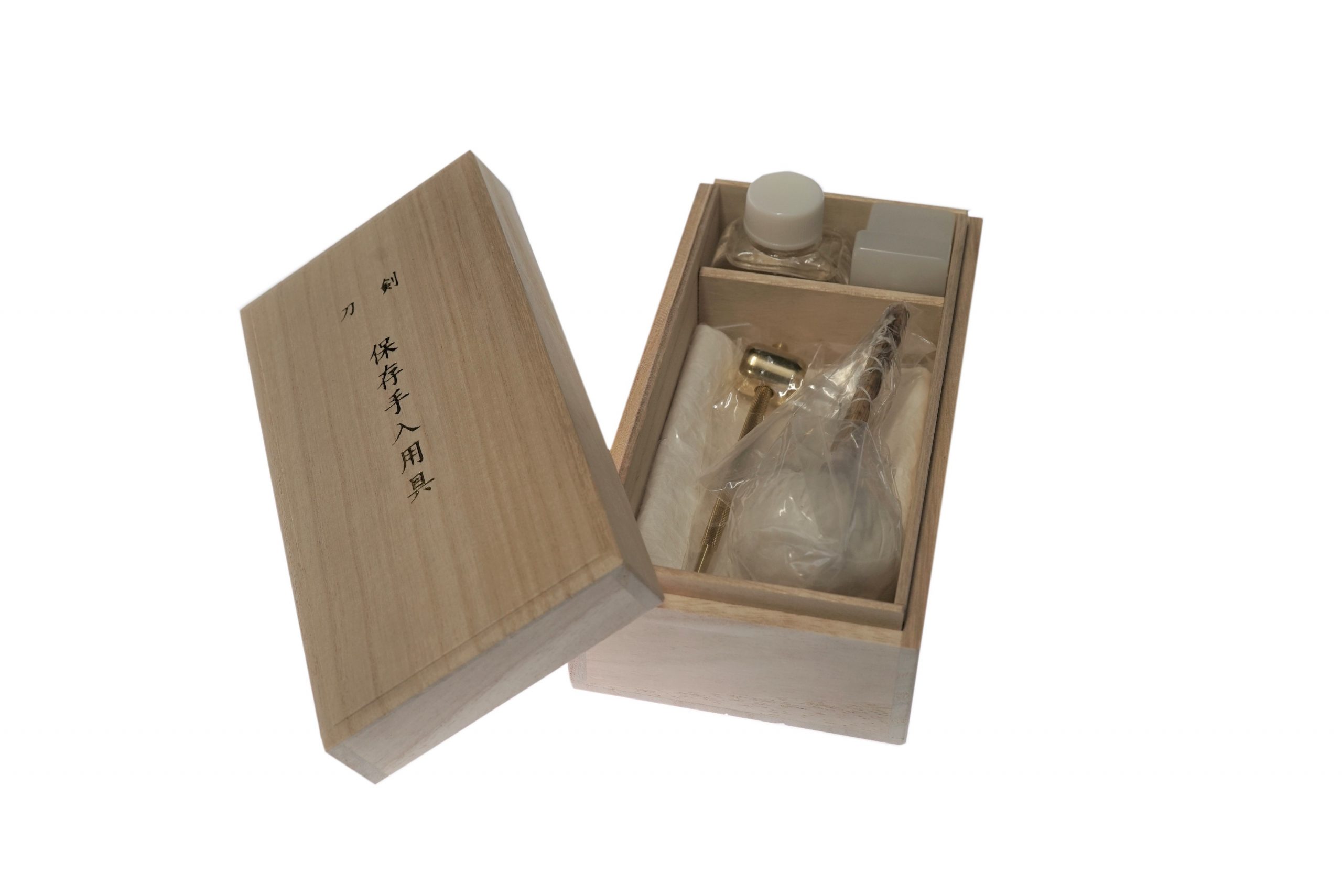
MORE ANTIQUE JAPANESE SWORD FOR SALE
SWORDS WITHOUT CERTIFICATES FOR SALE
LEARN JAPANESE SWORD TERMINOLOGY
Thank you for reading all the information on the page. If you have any difficulty choosing the right Japanese sword for you, we will be more than happy to help you find the one that speaks to you the most. Please feel free to contact us.
